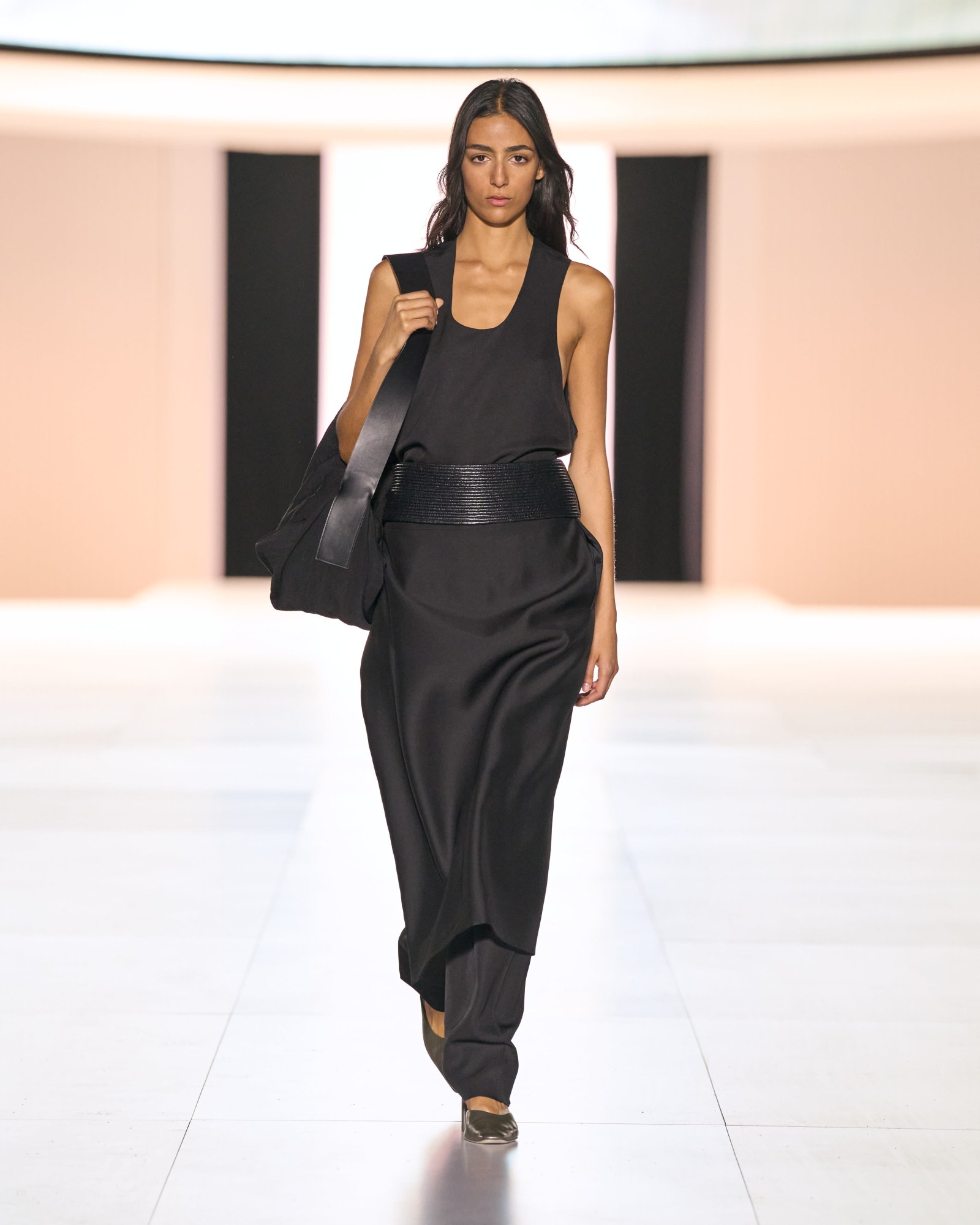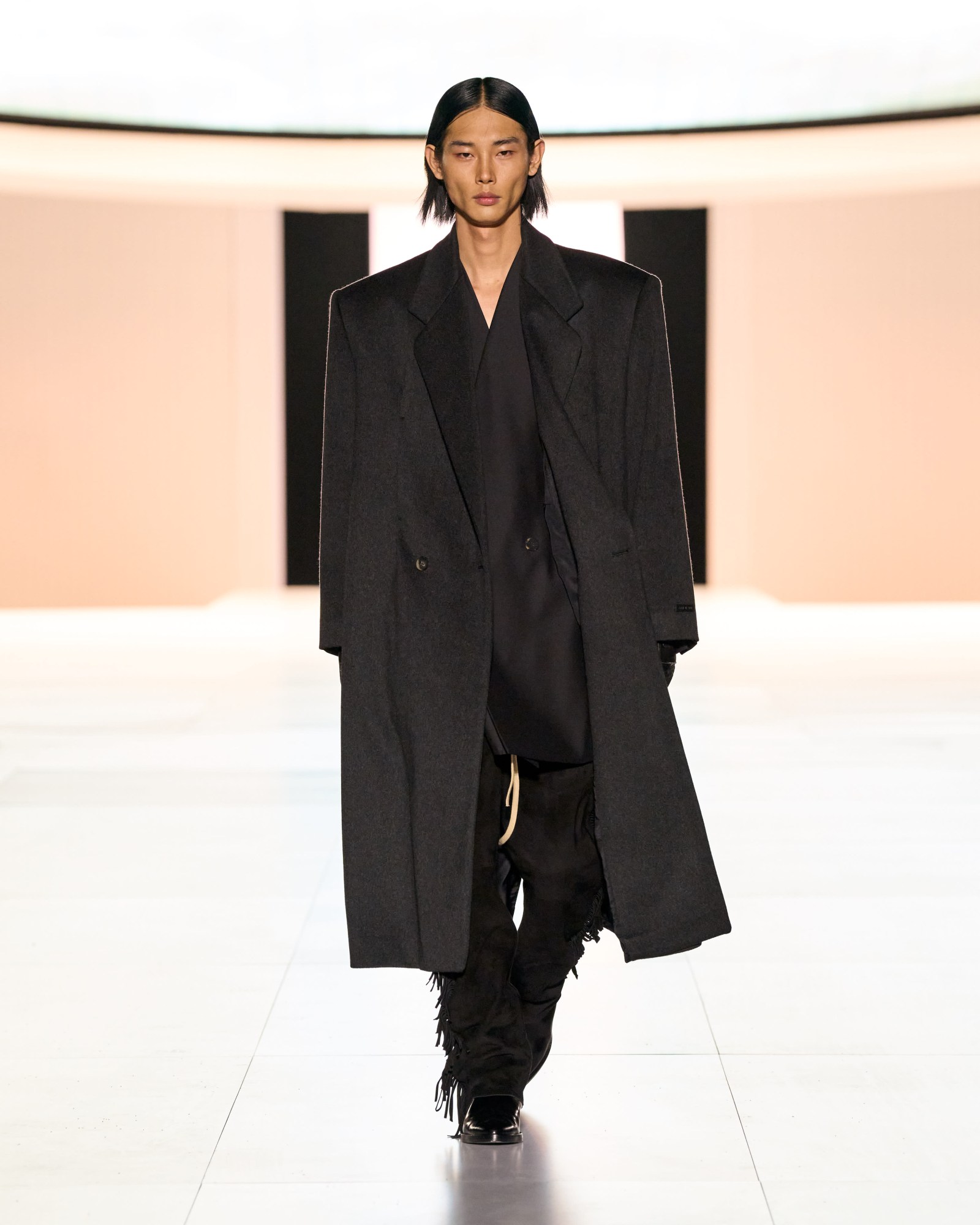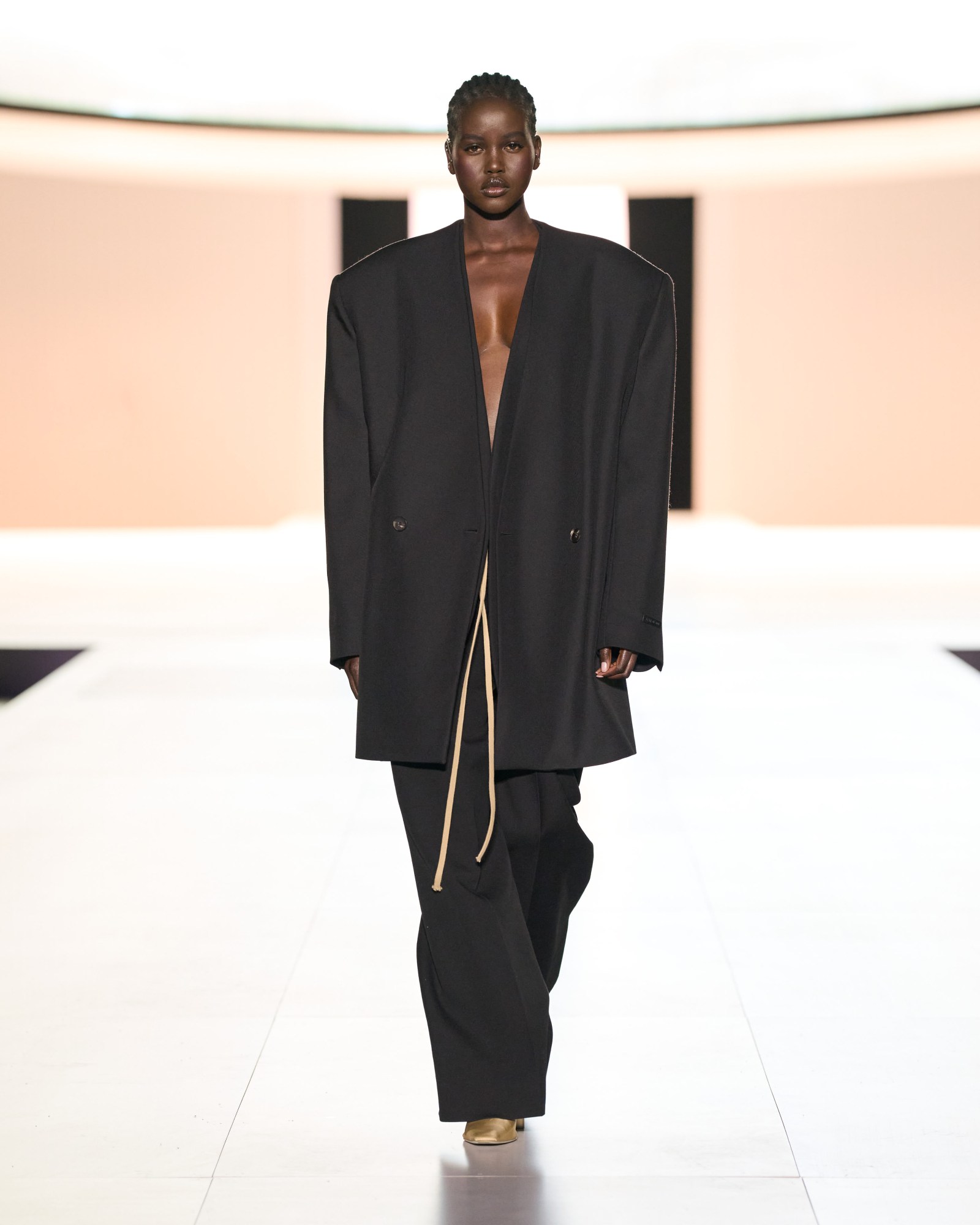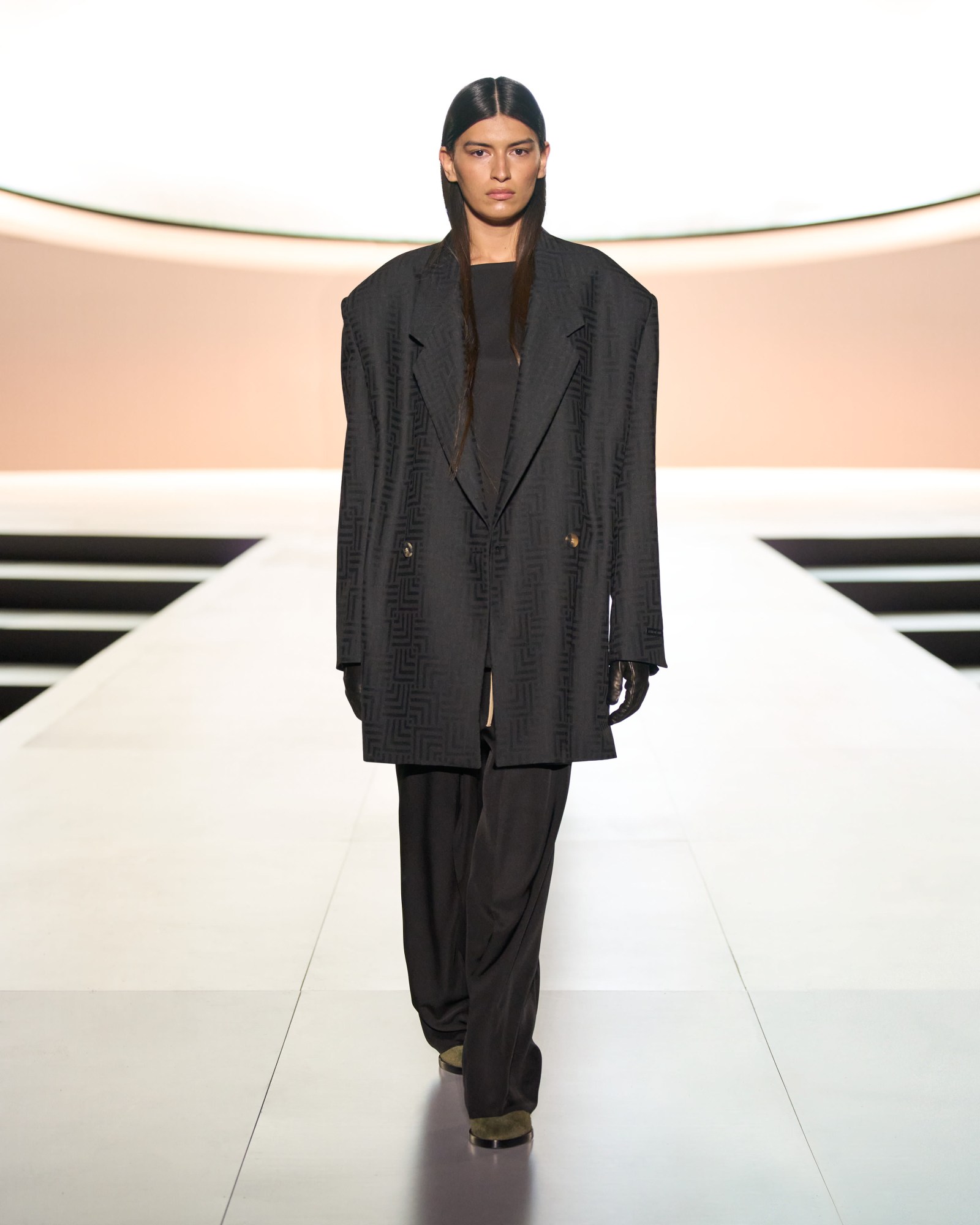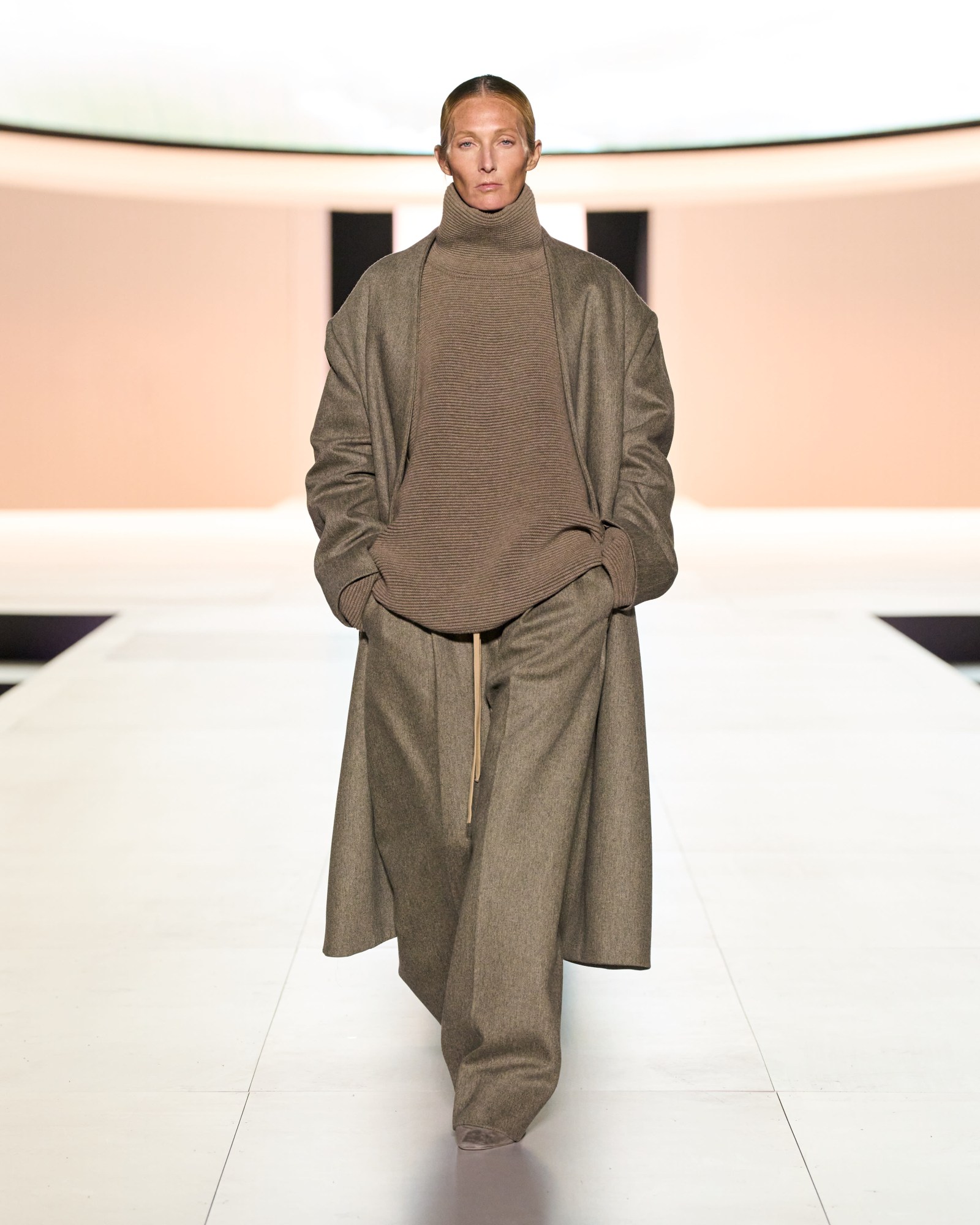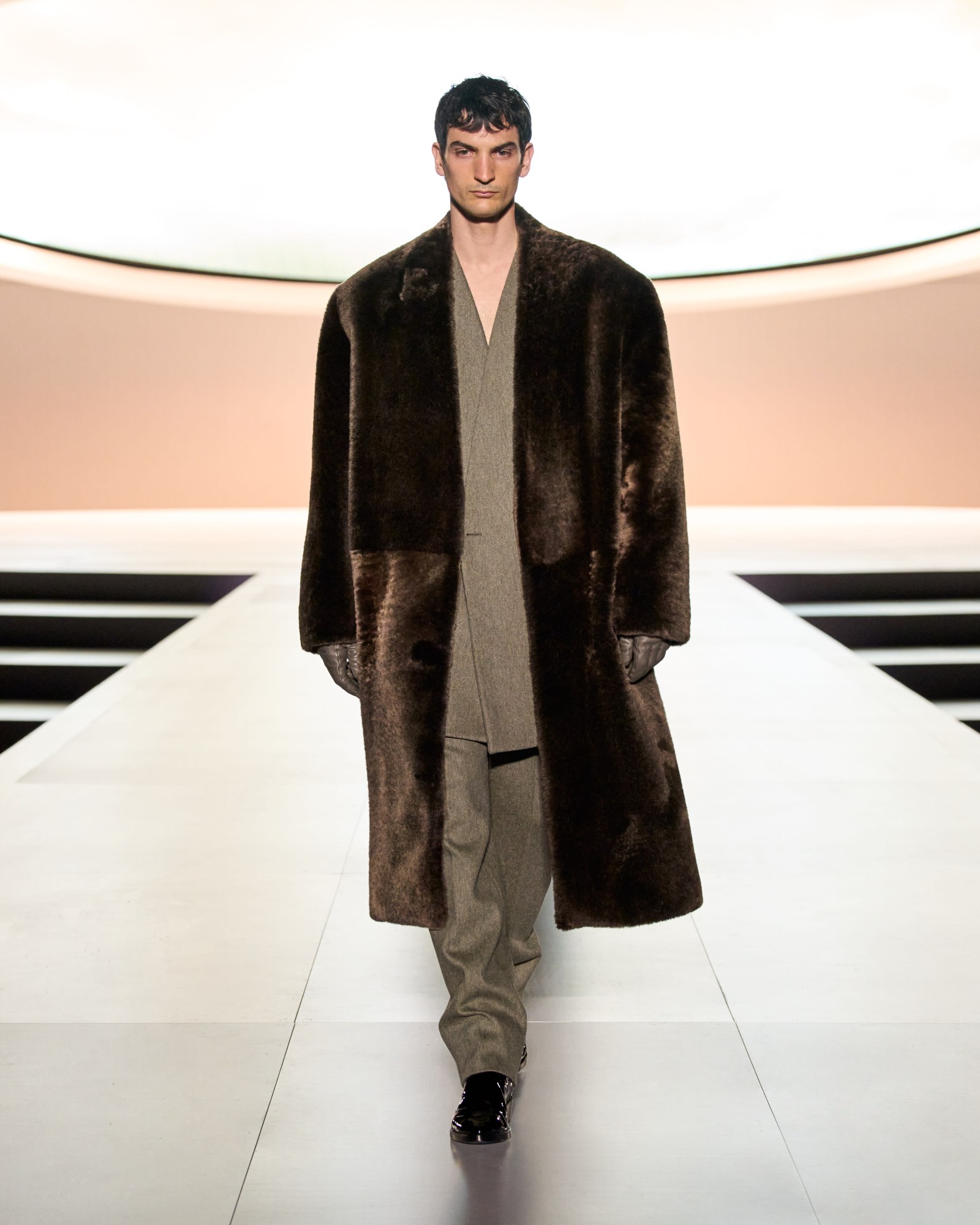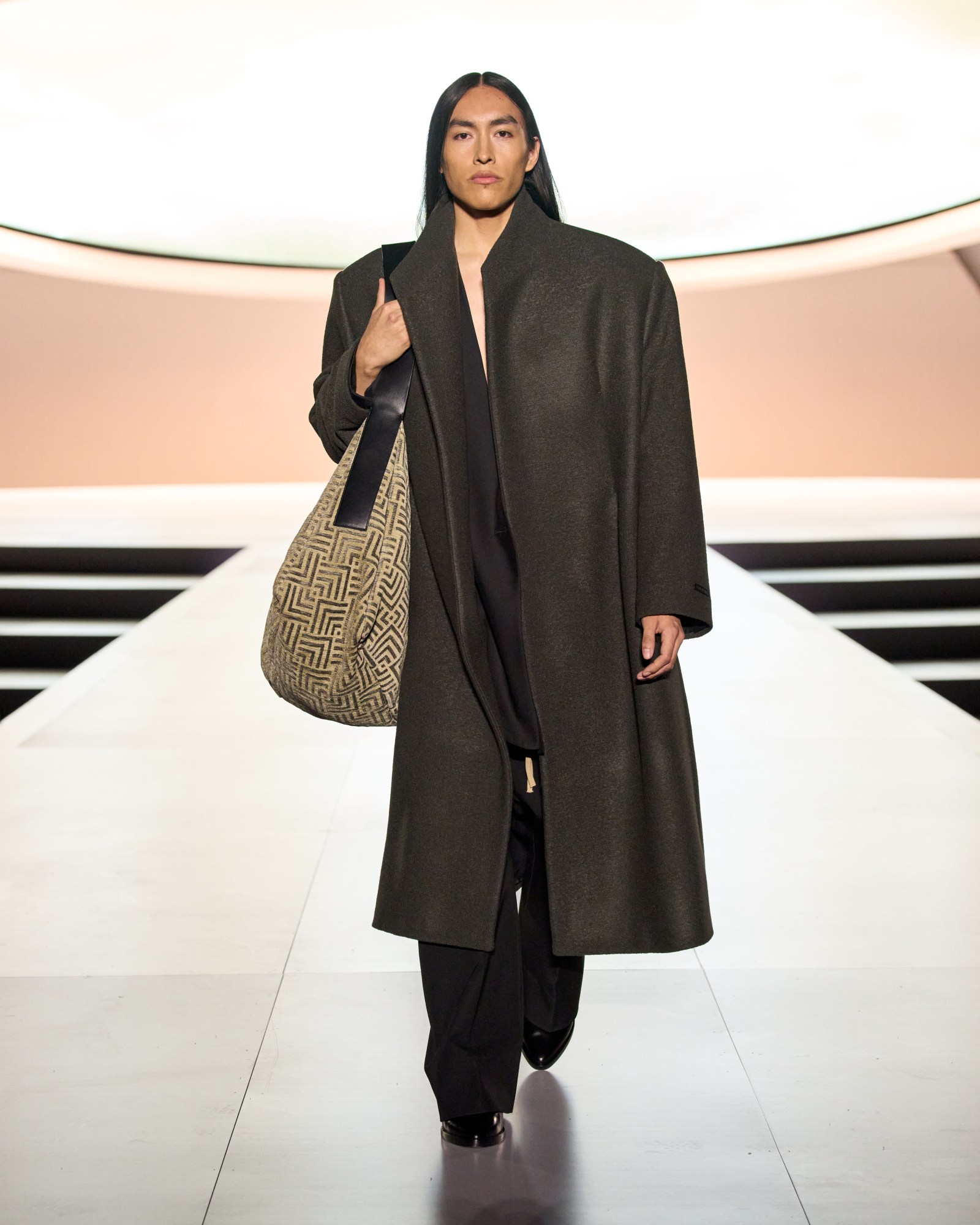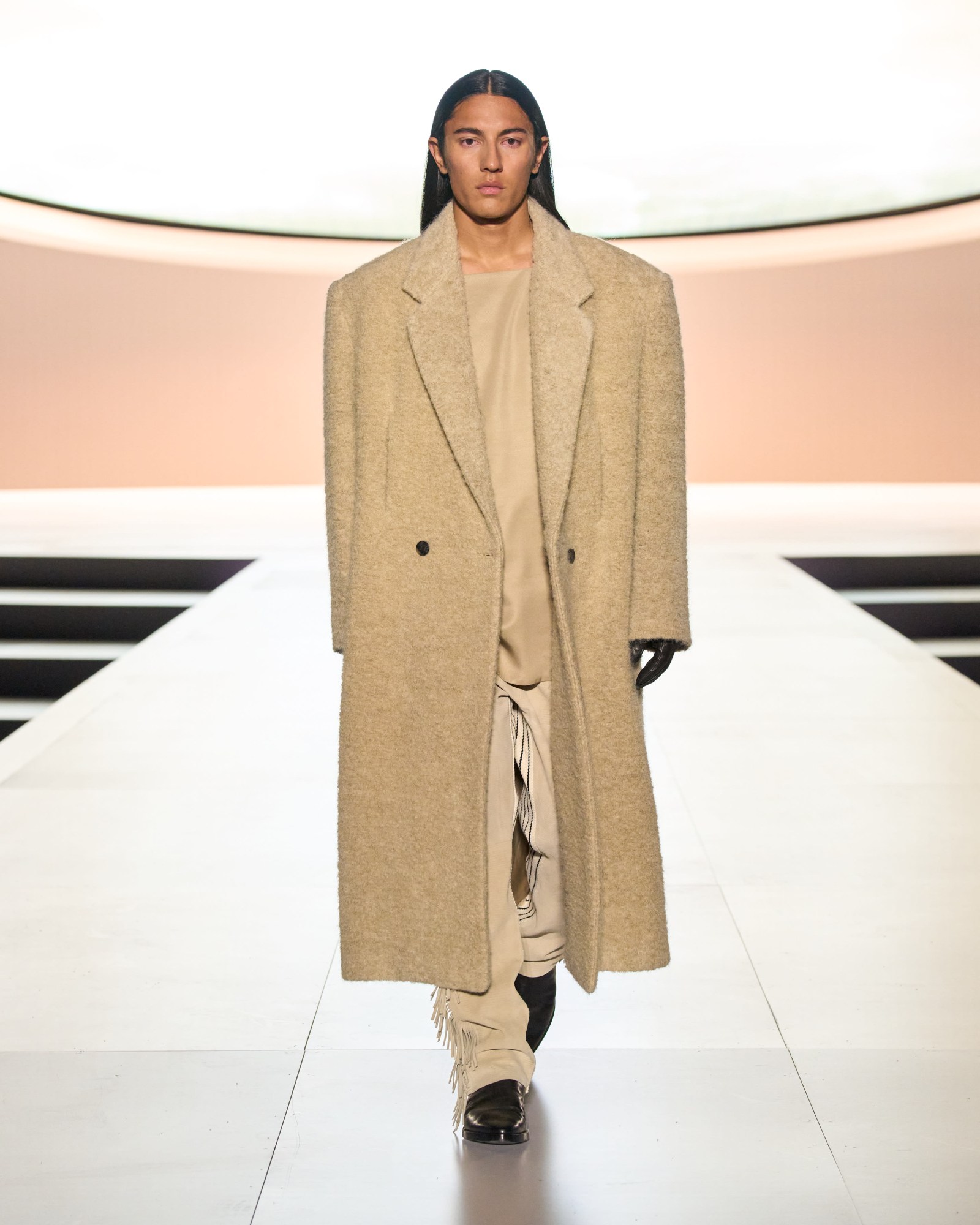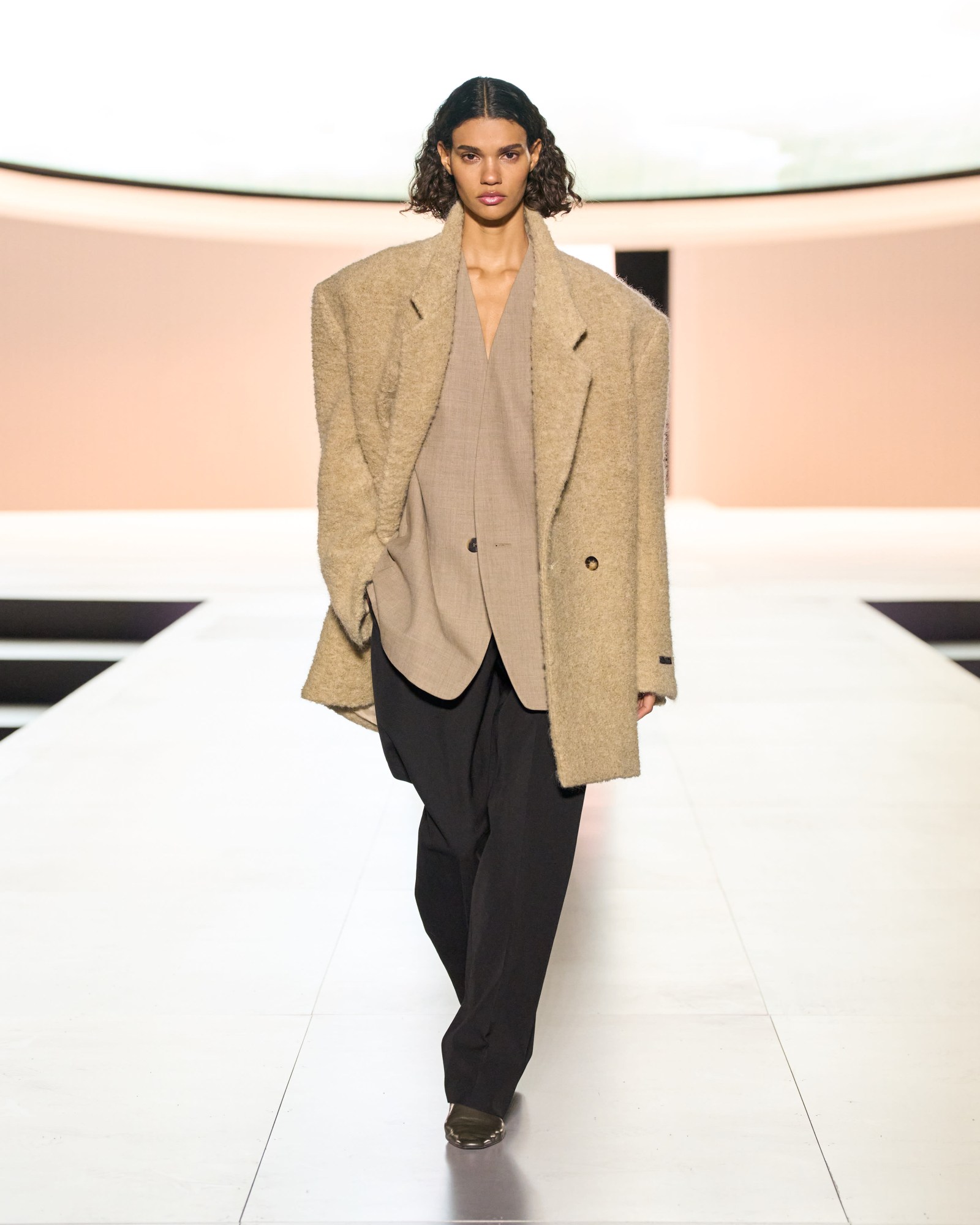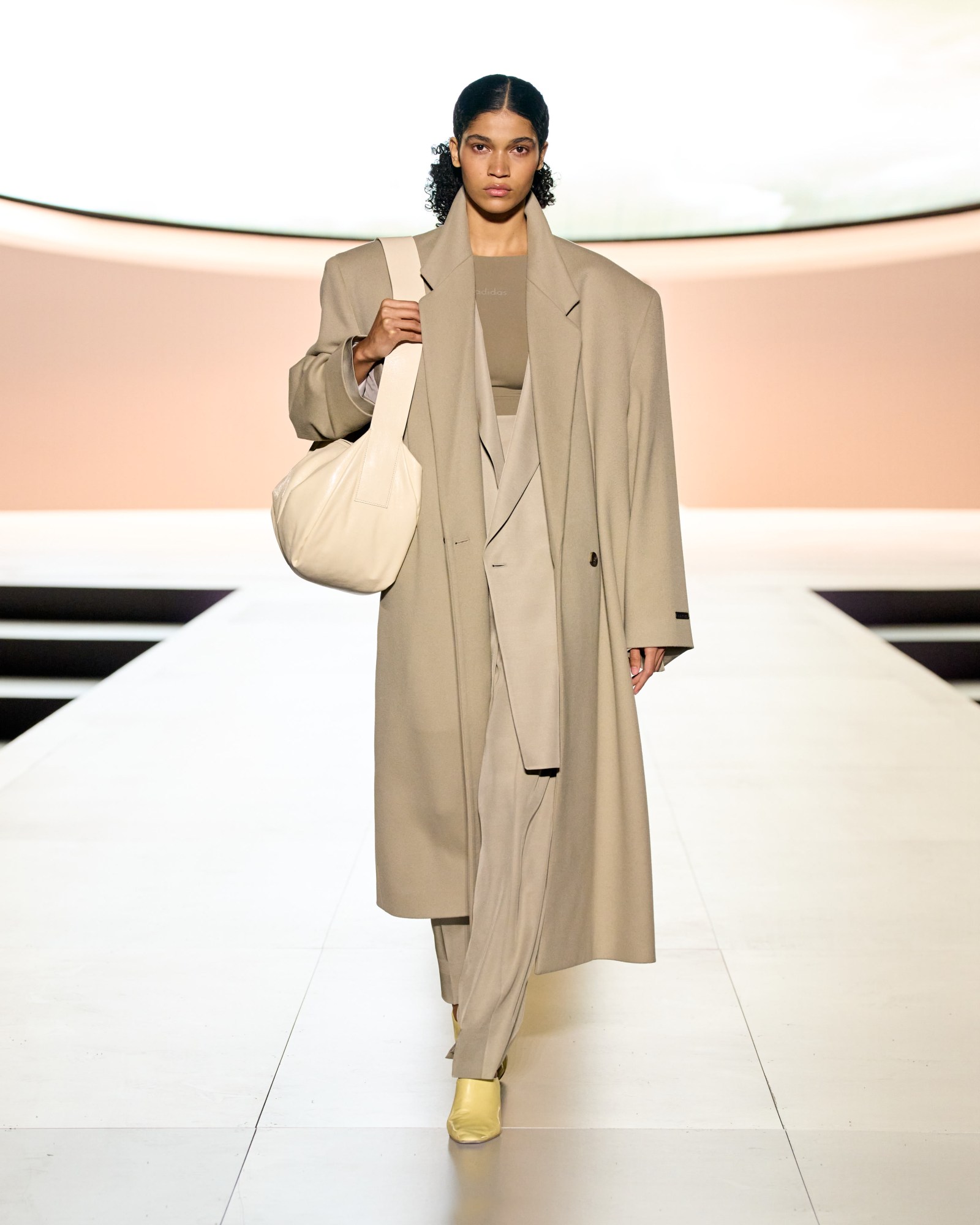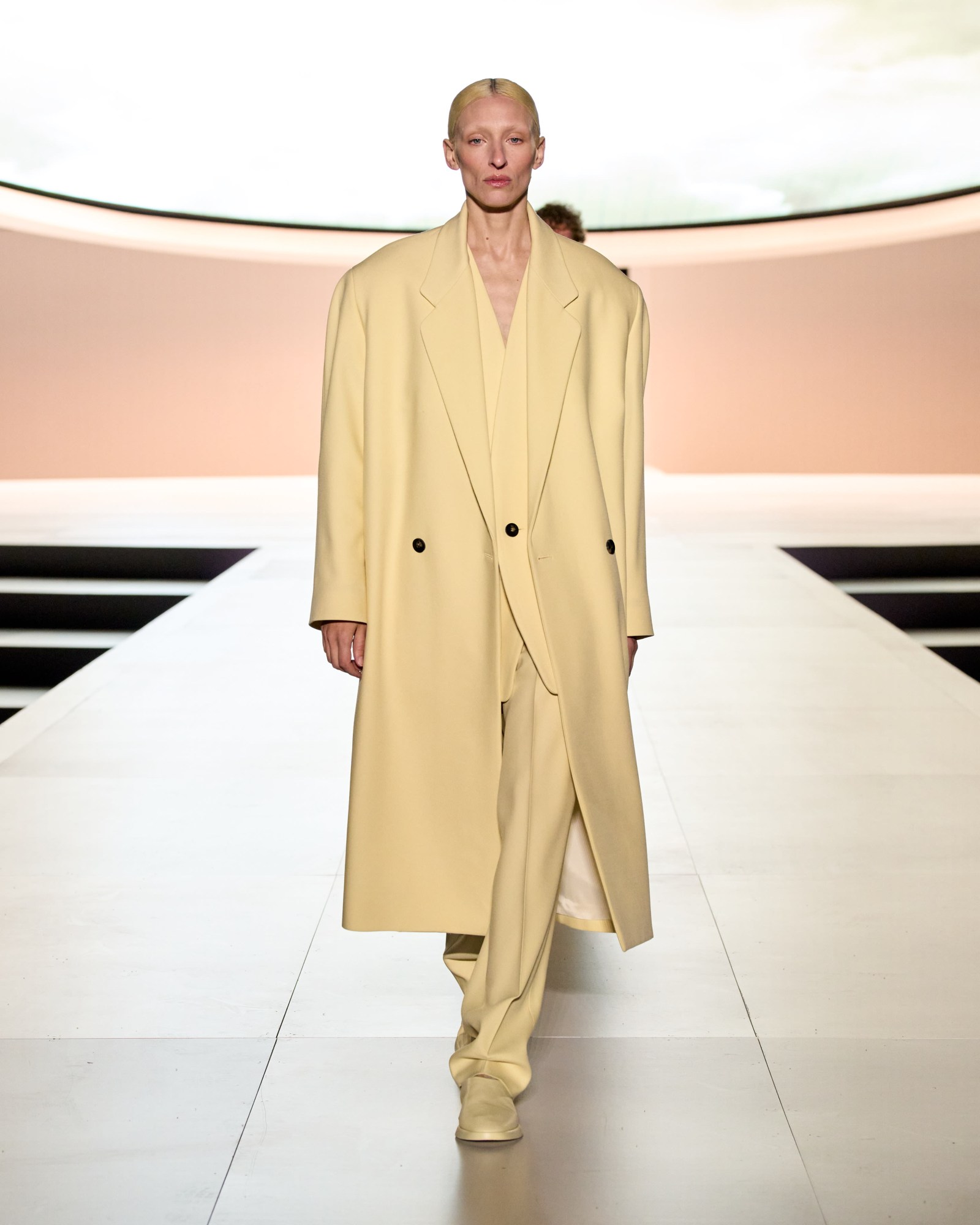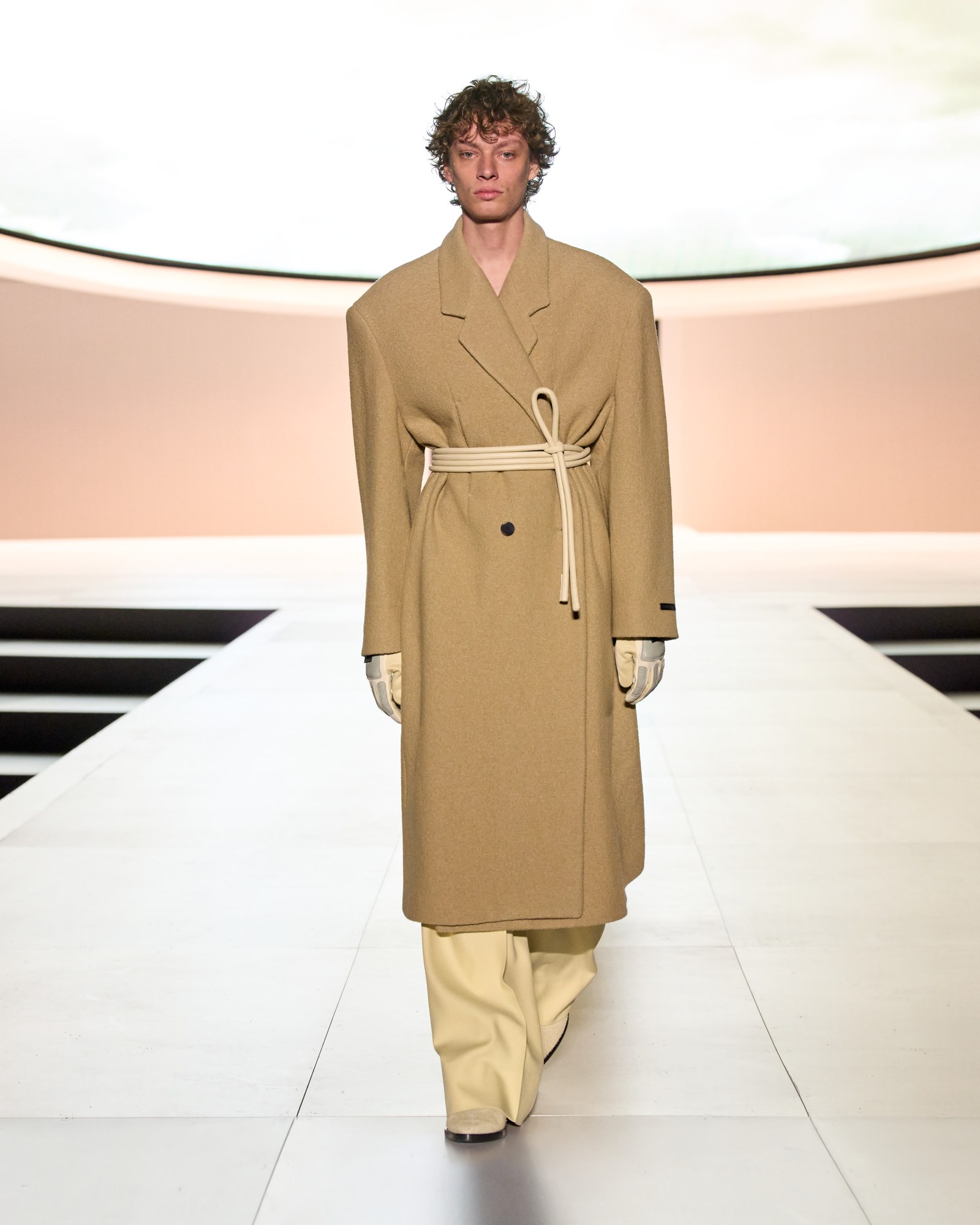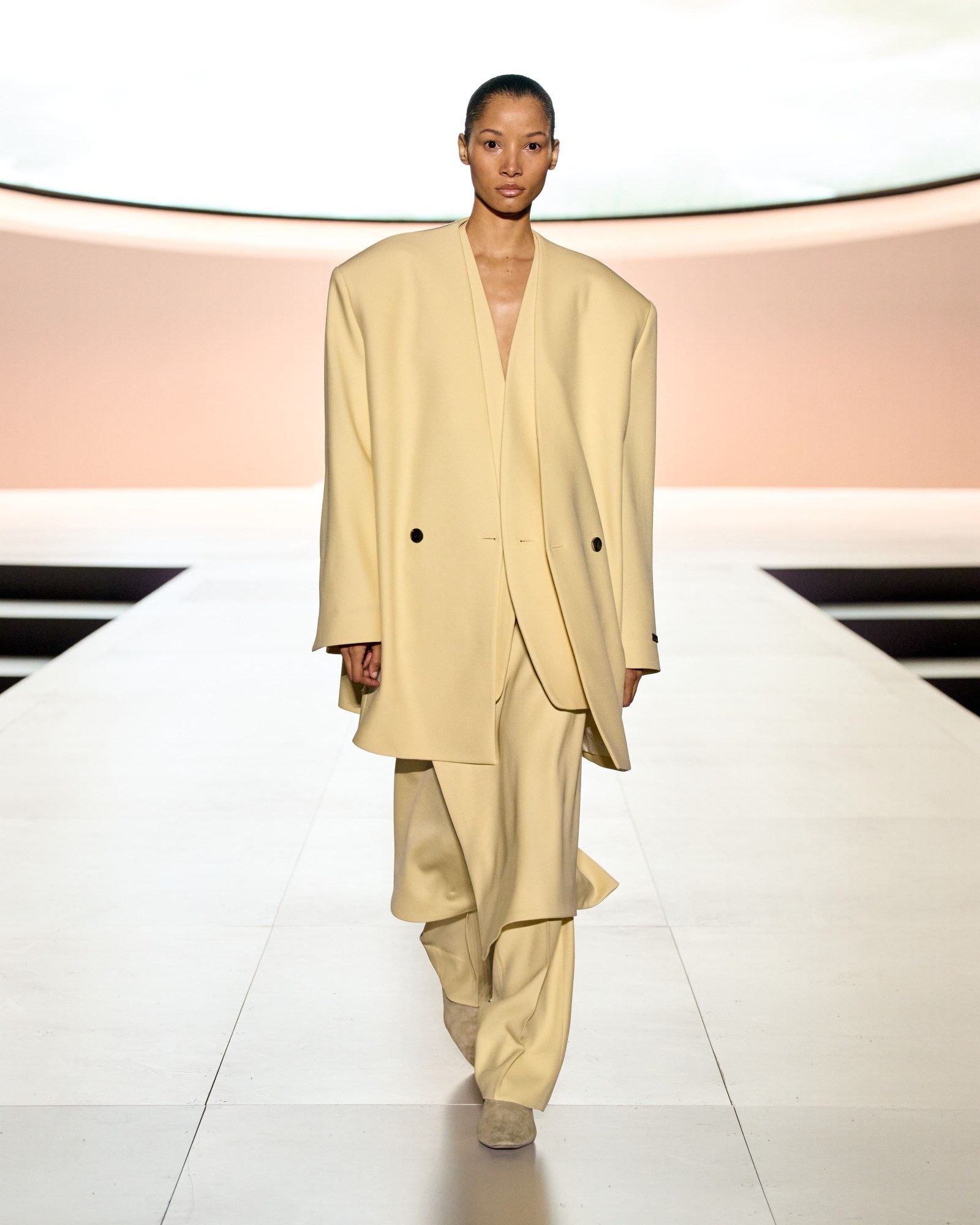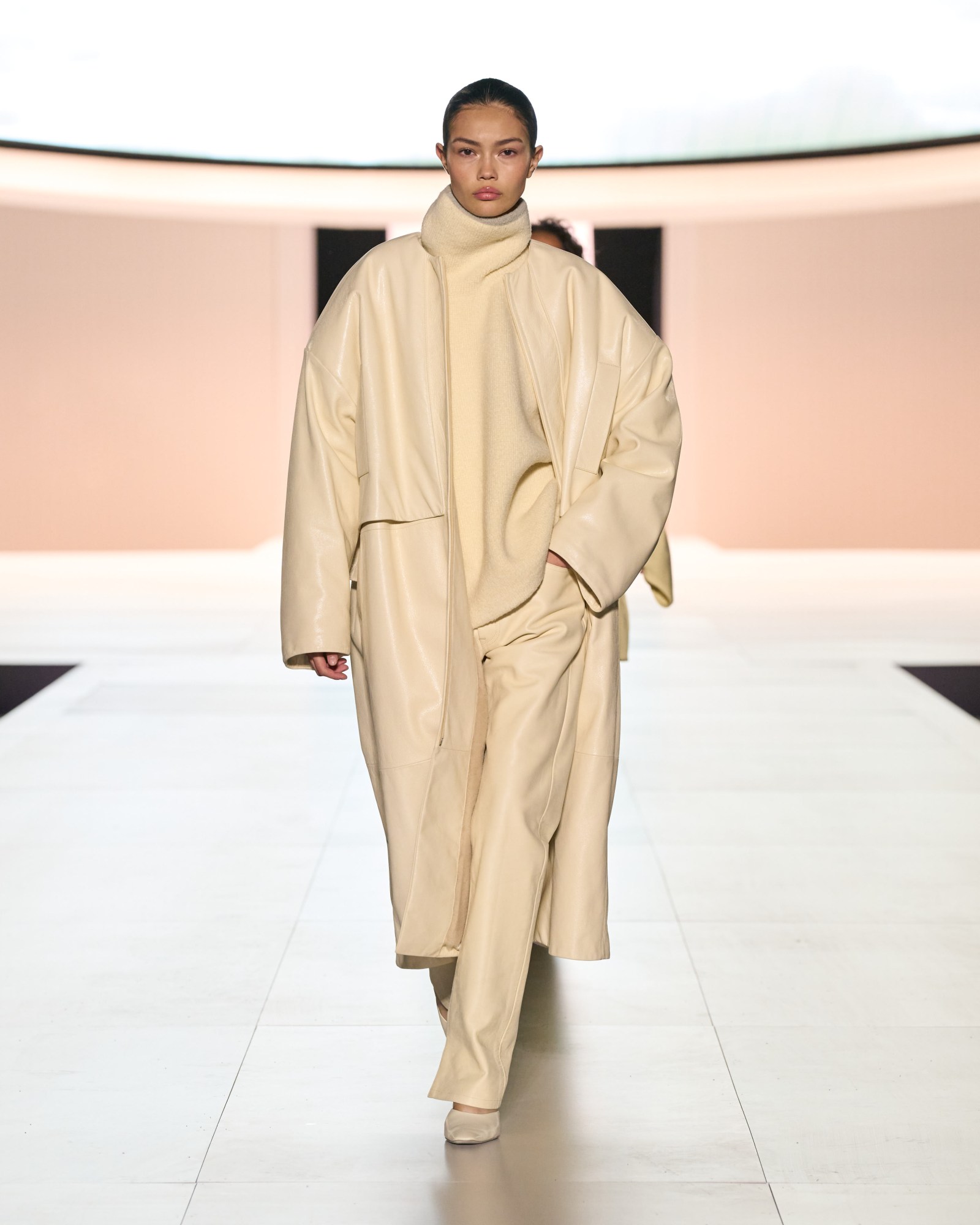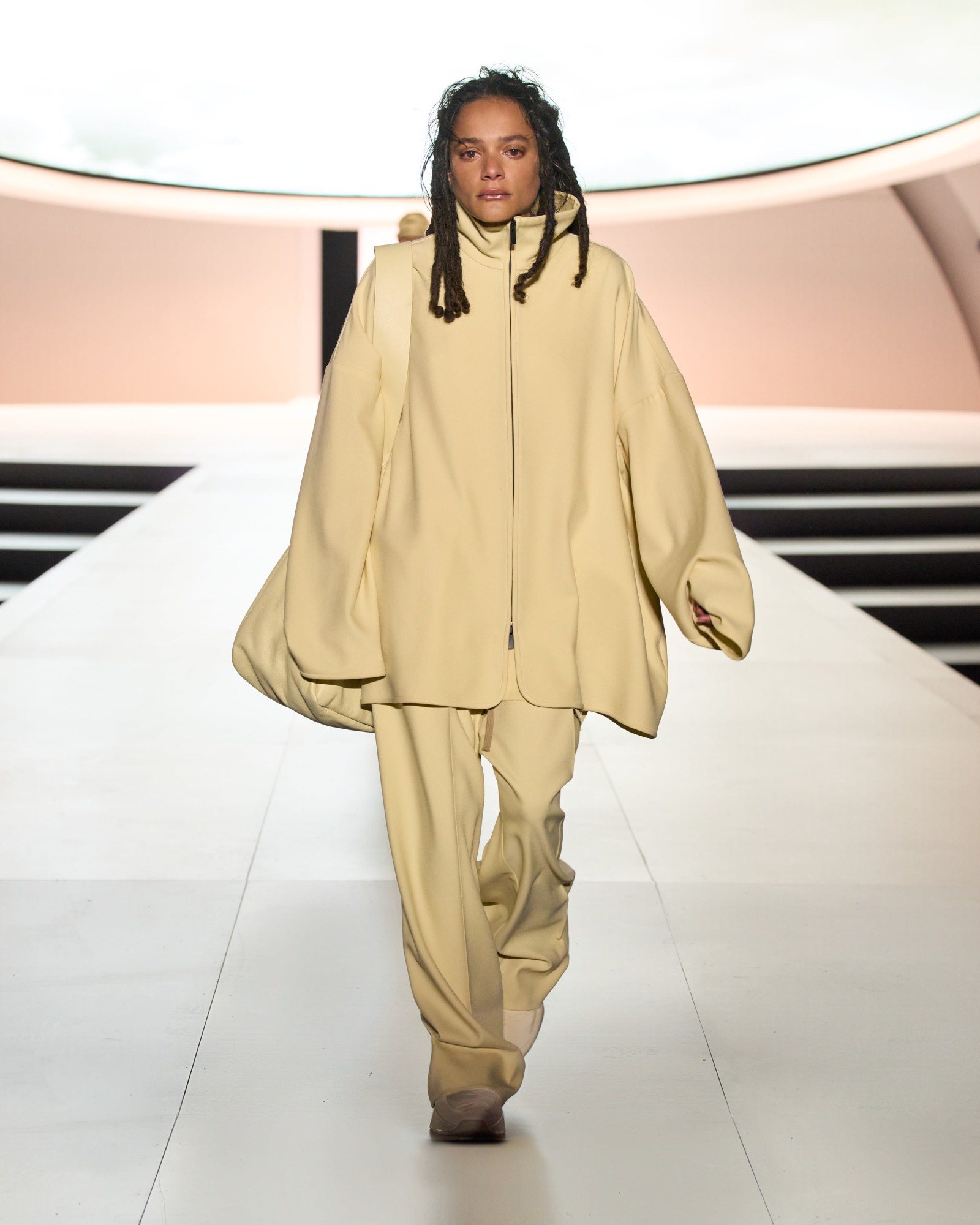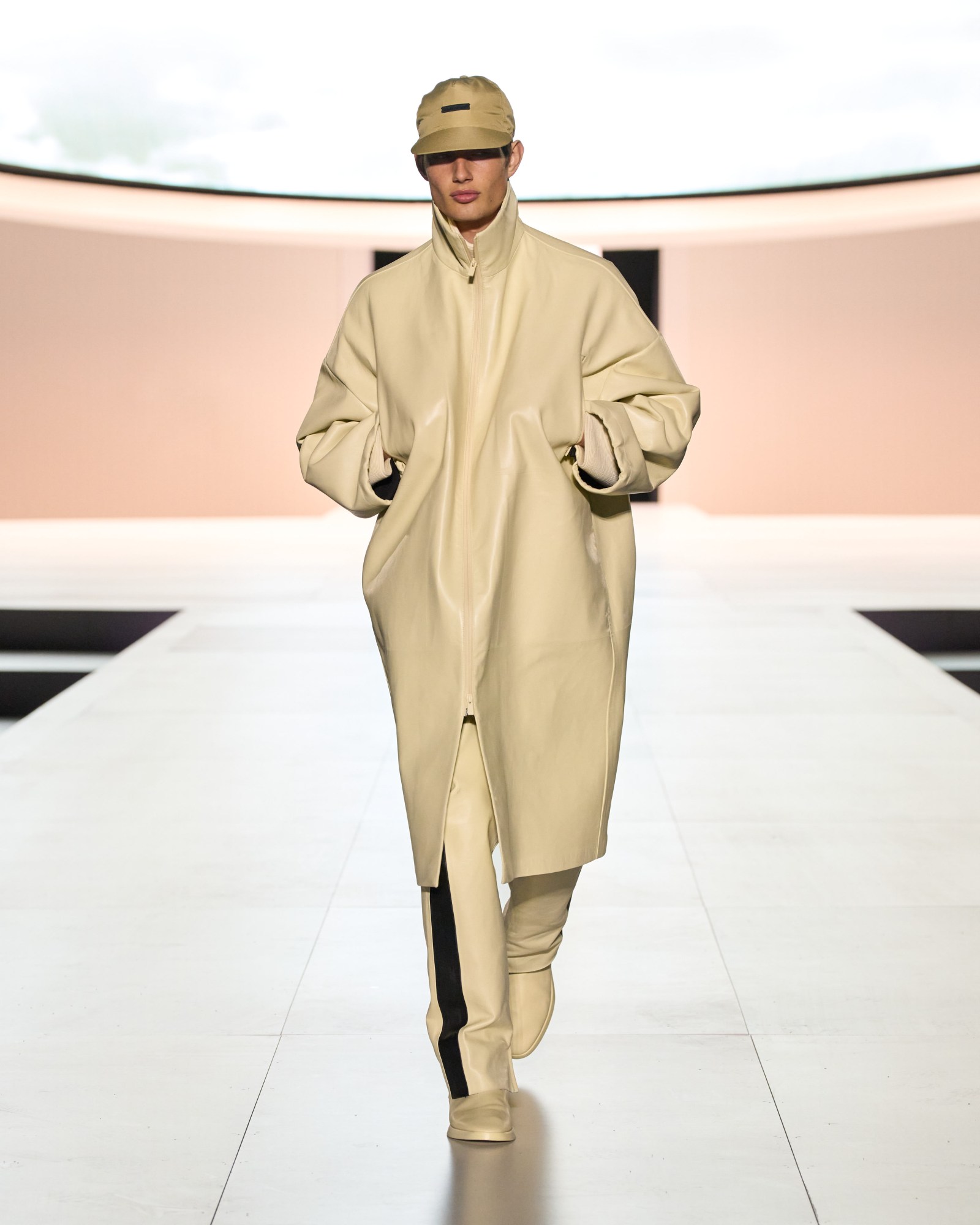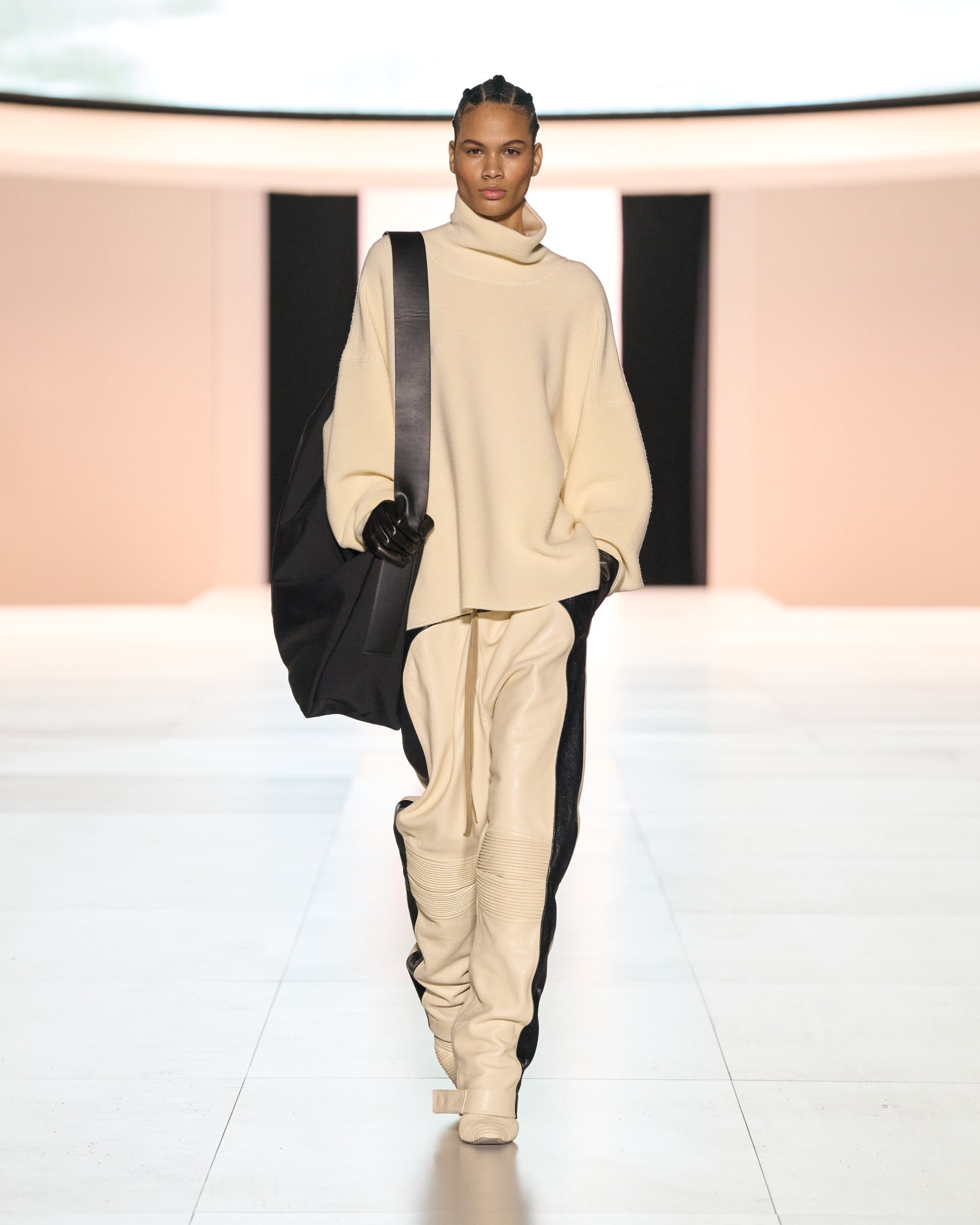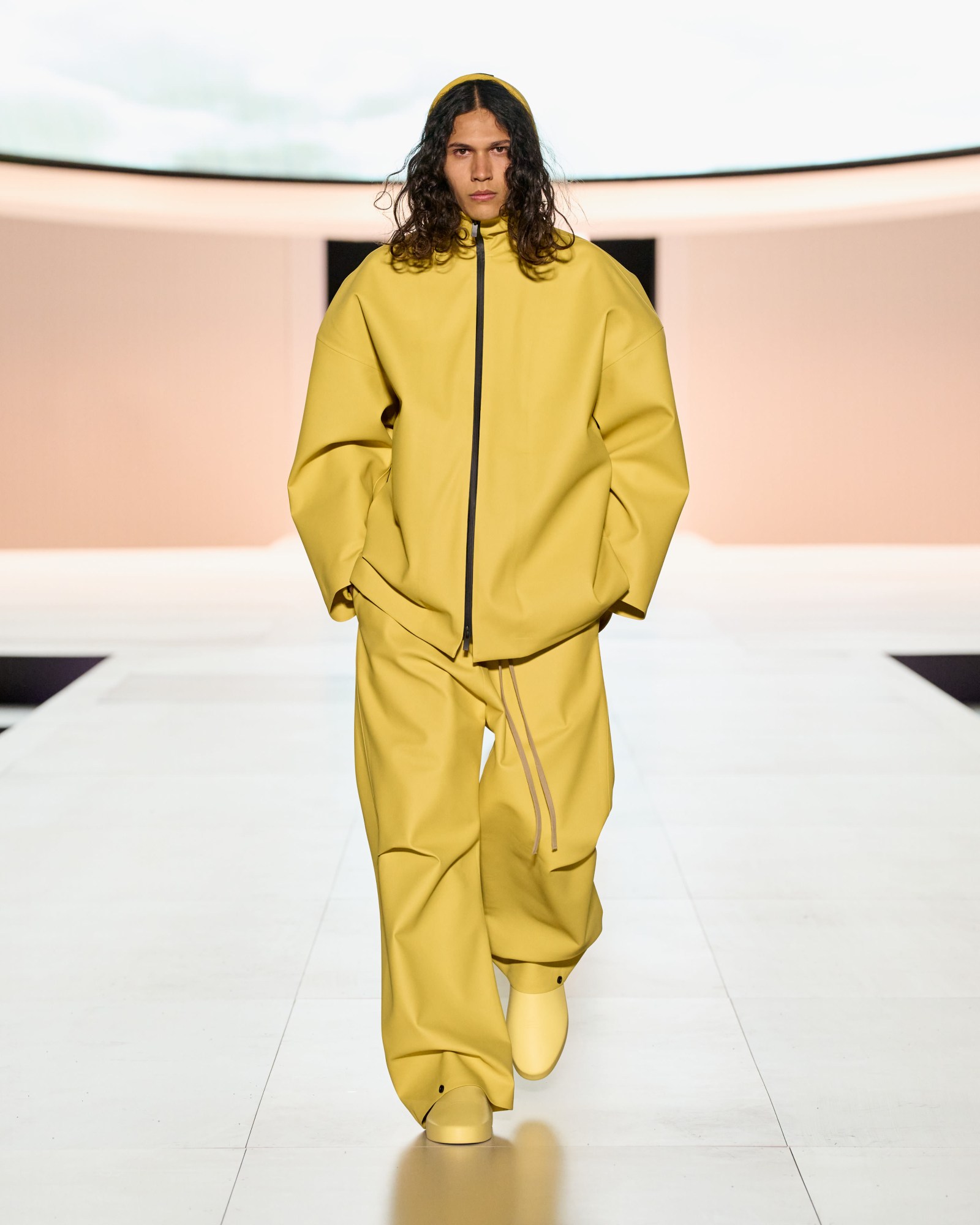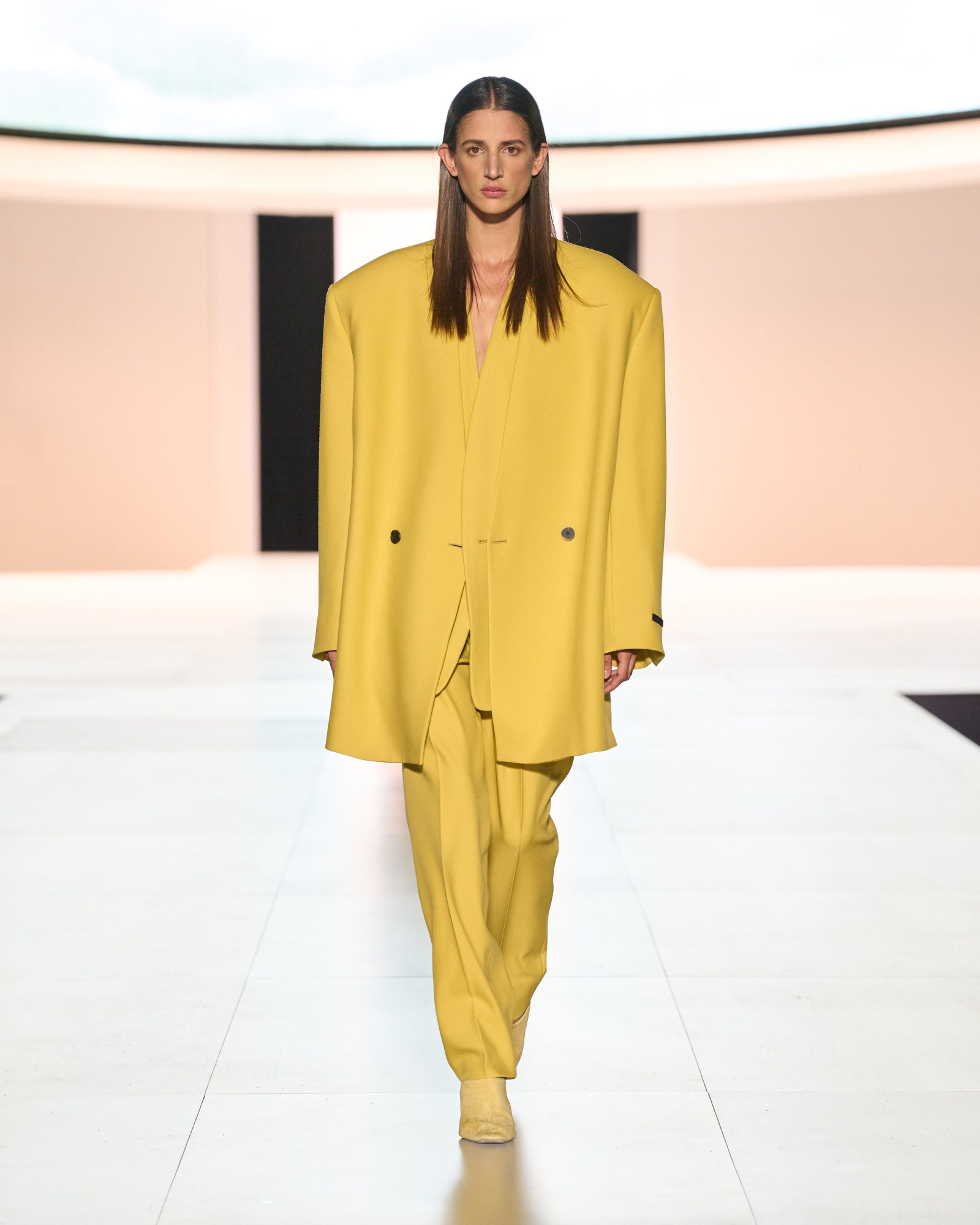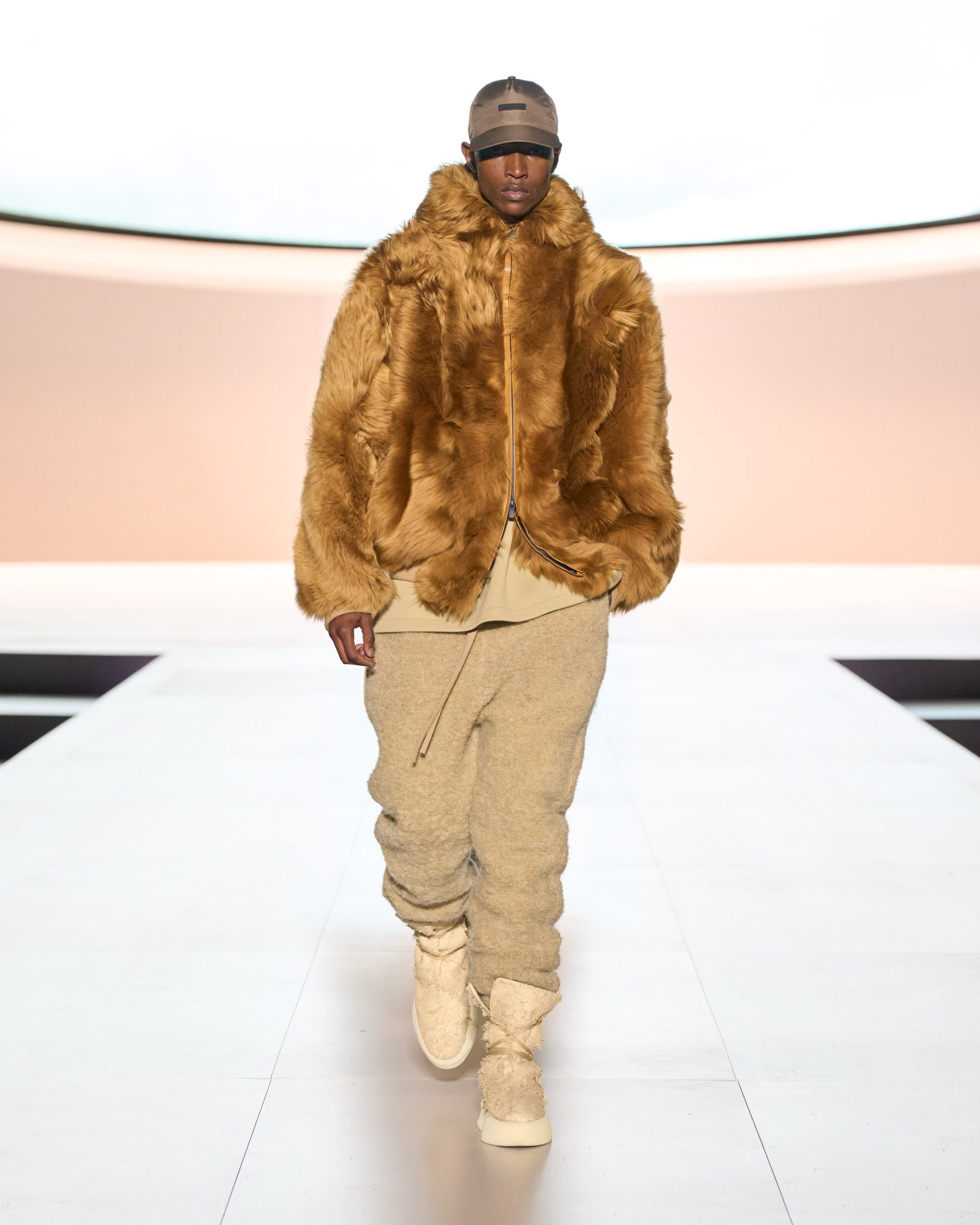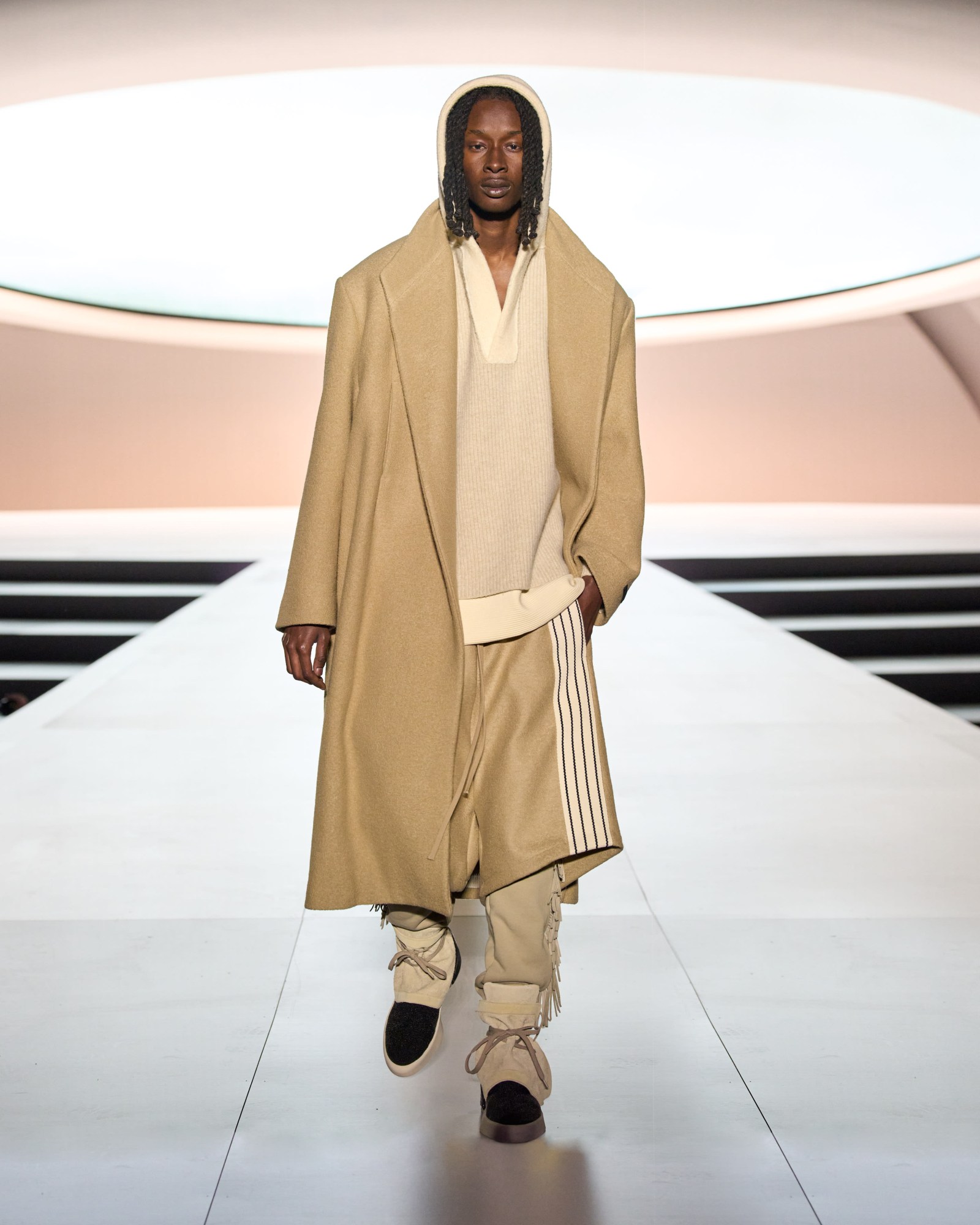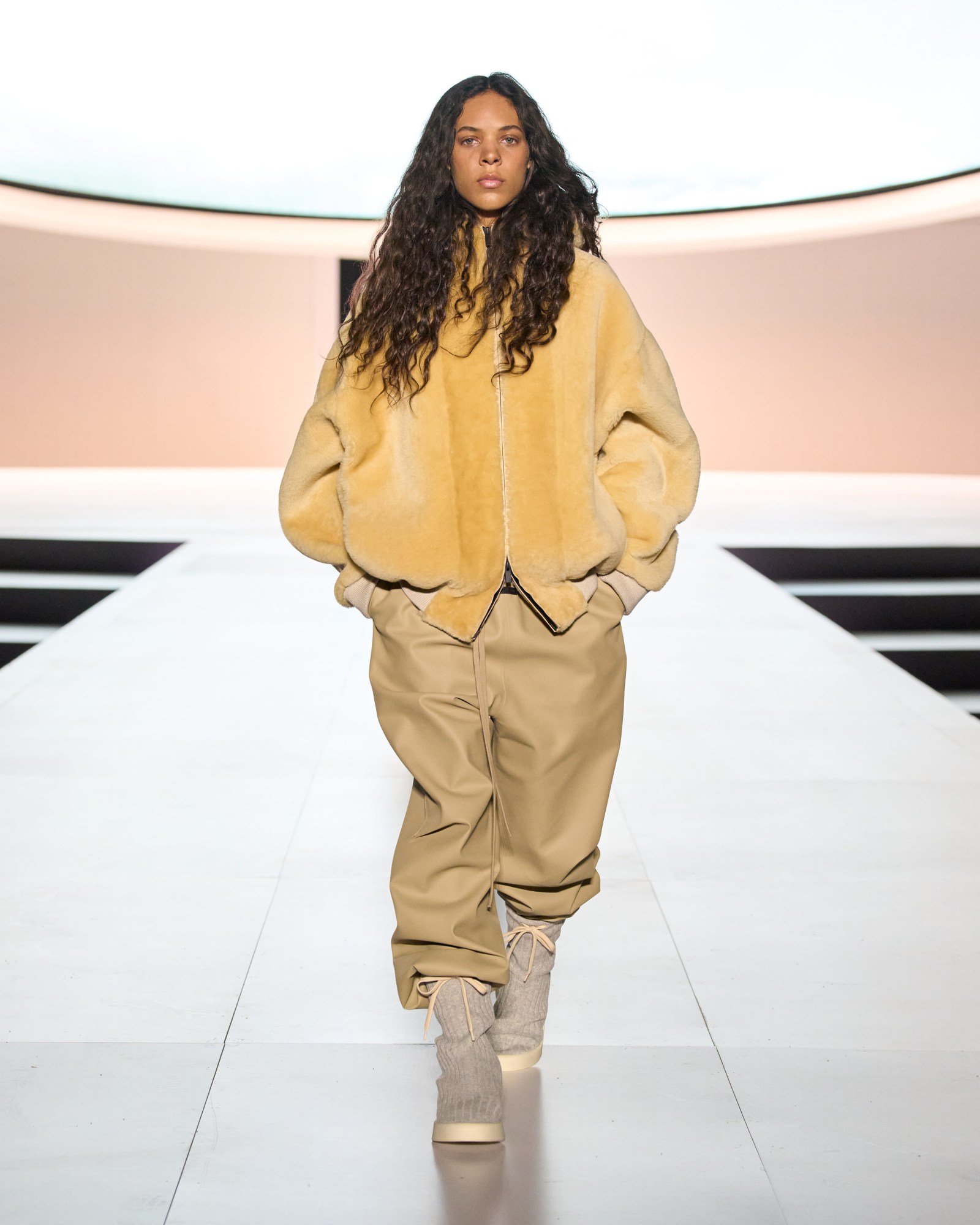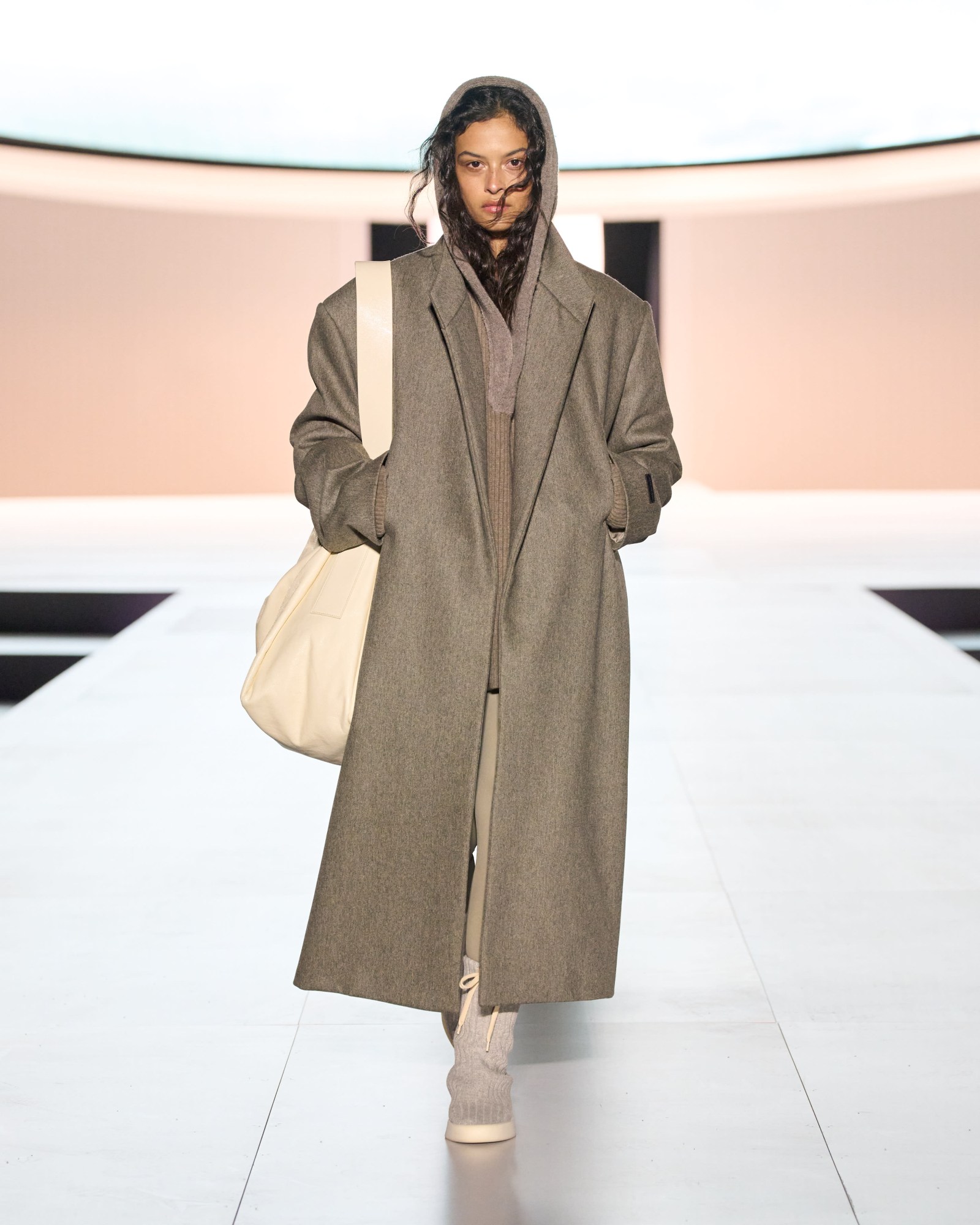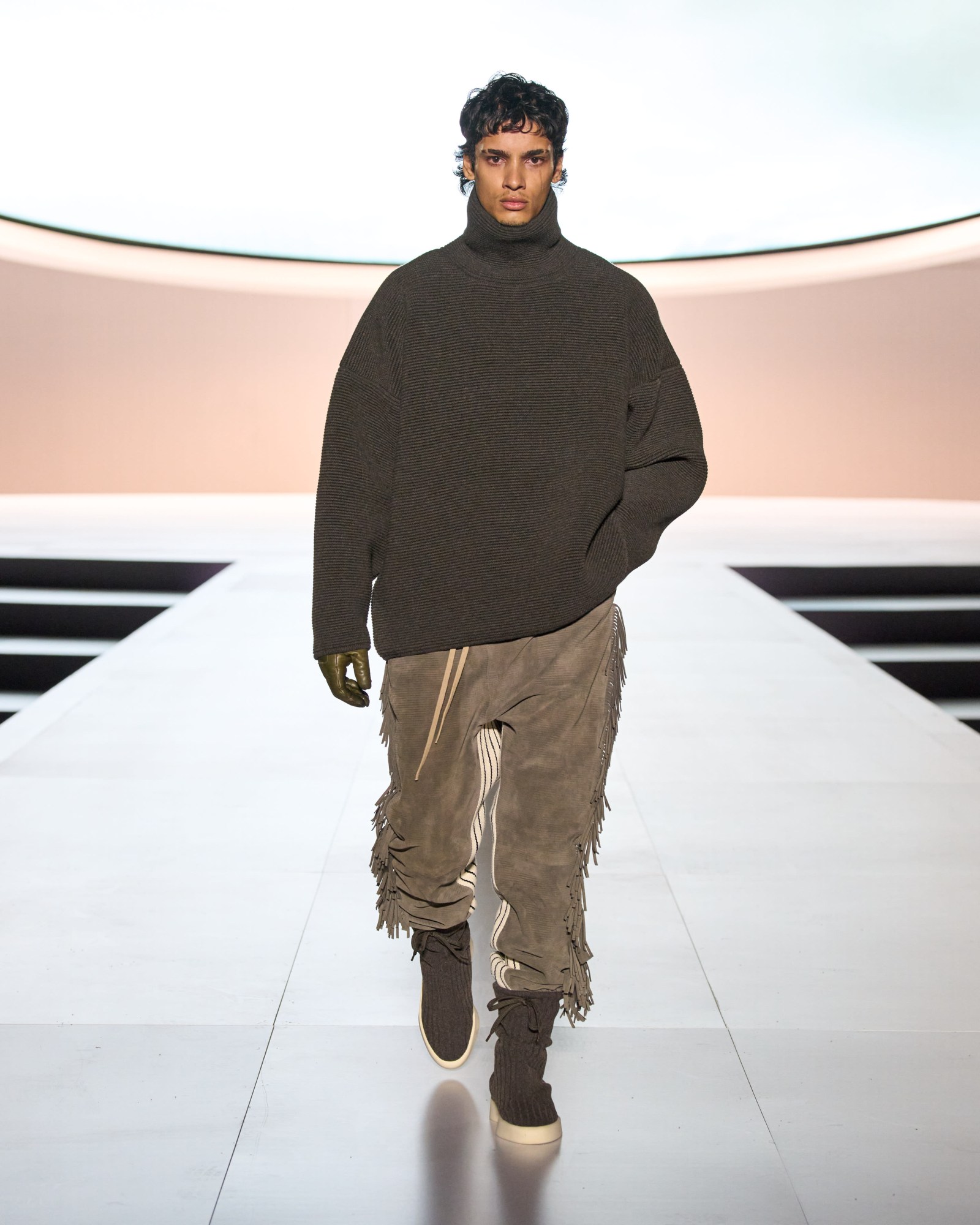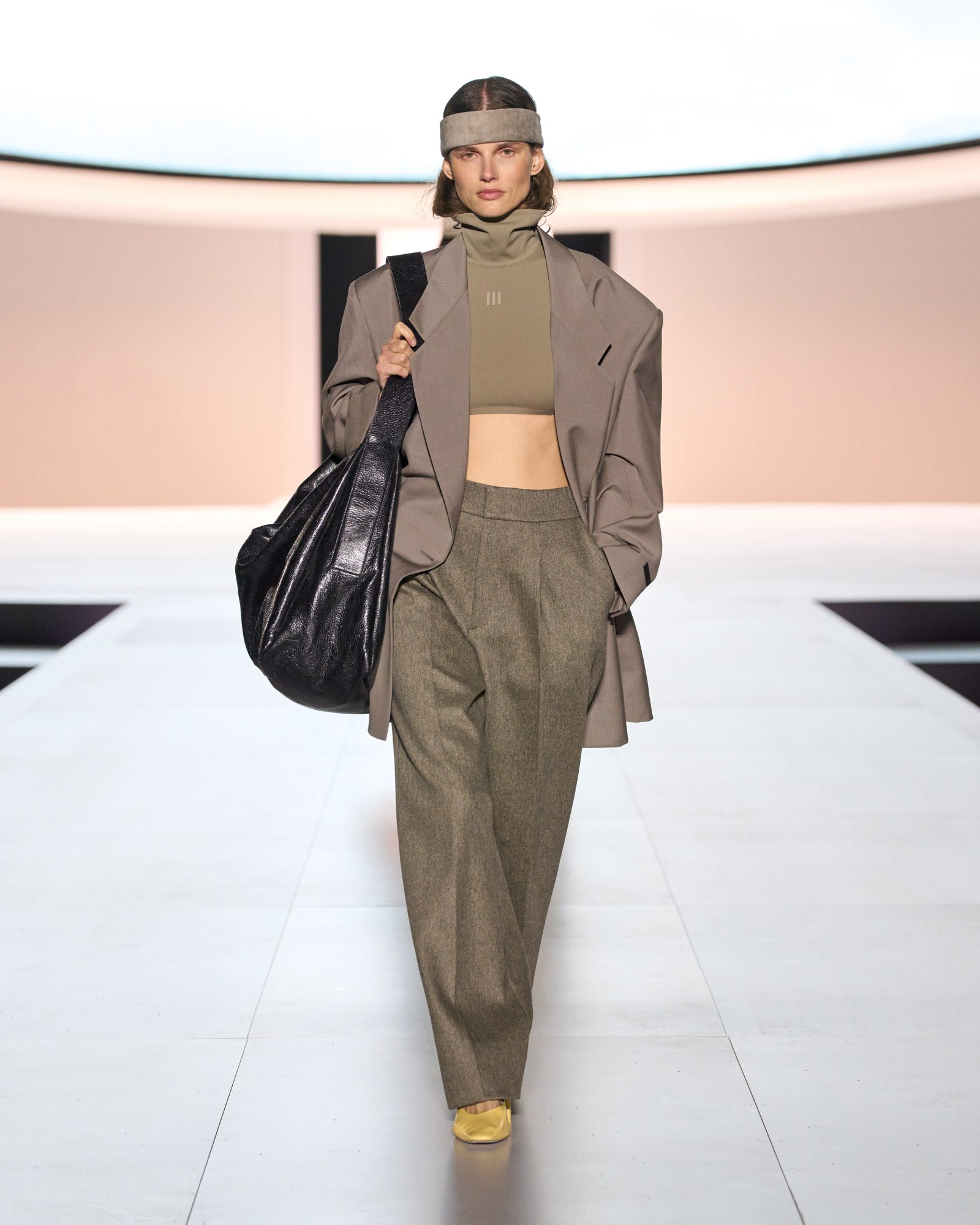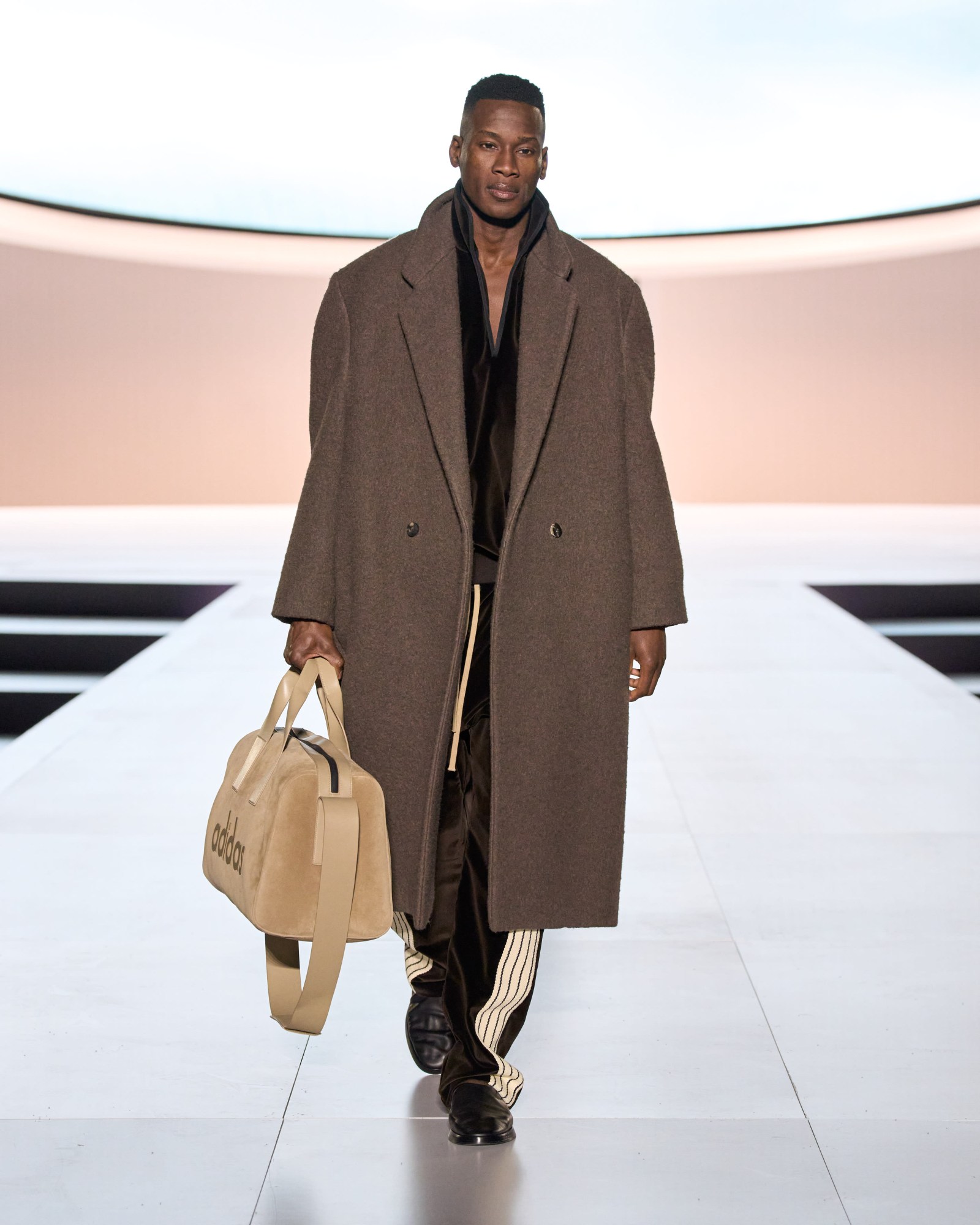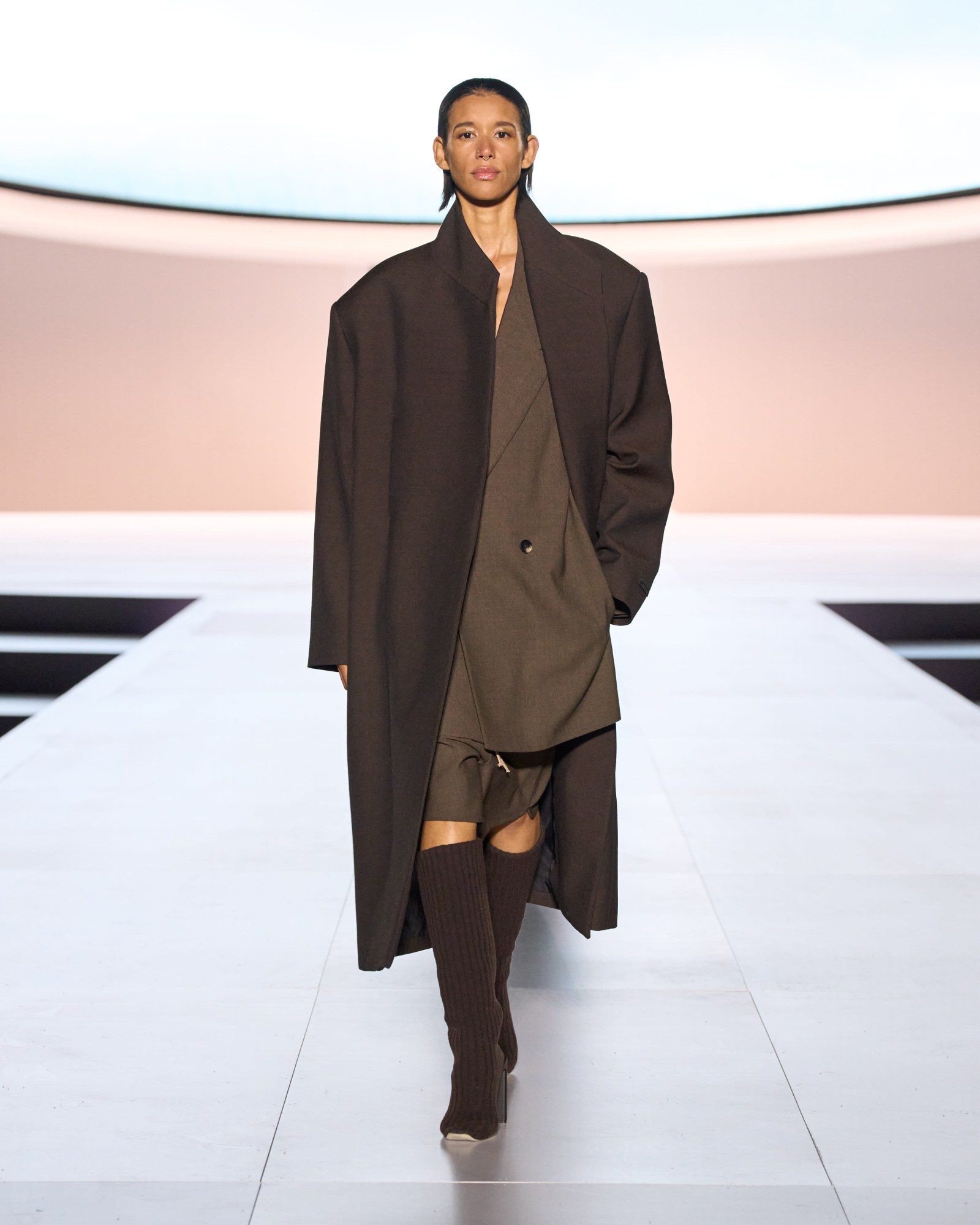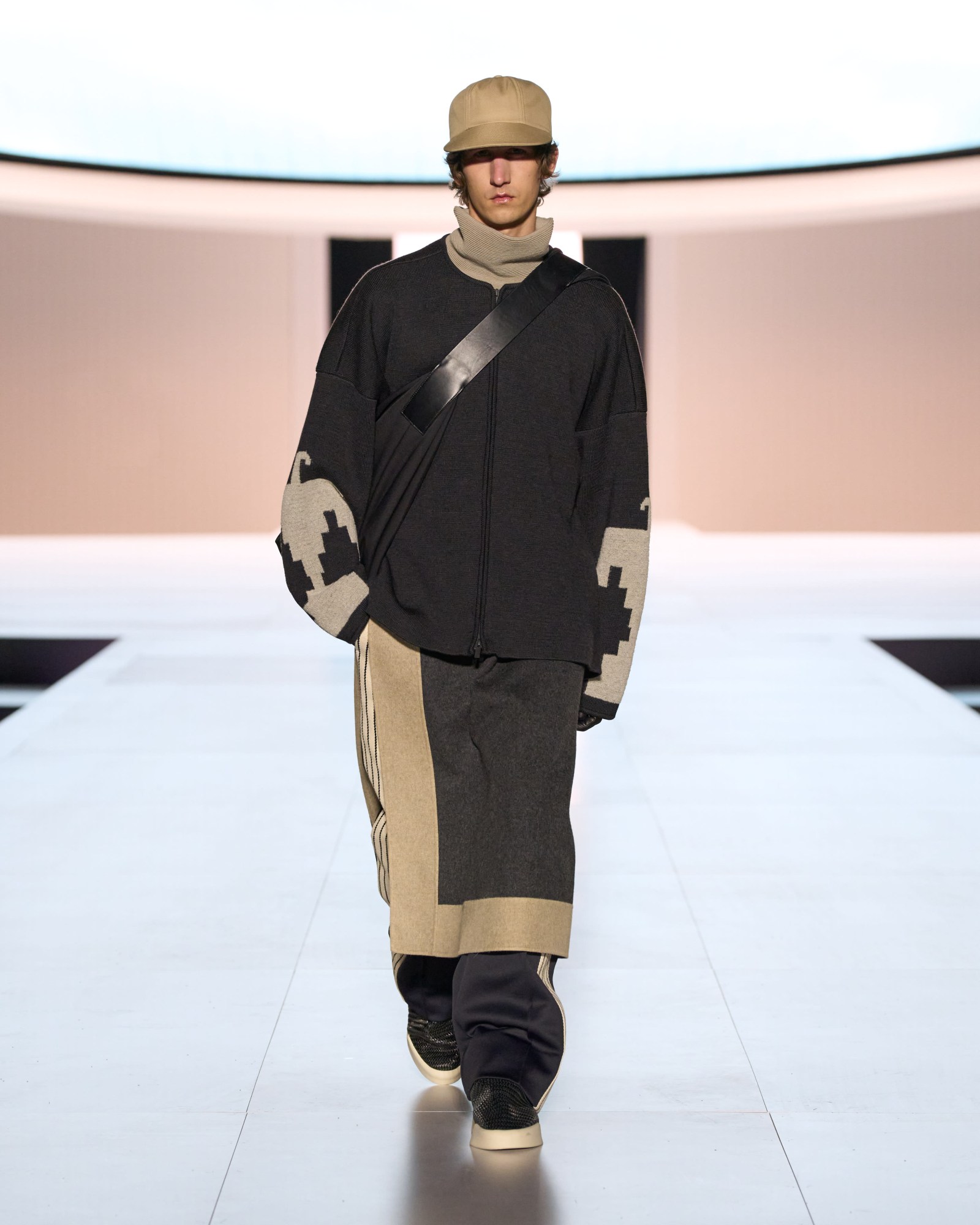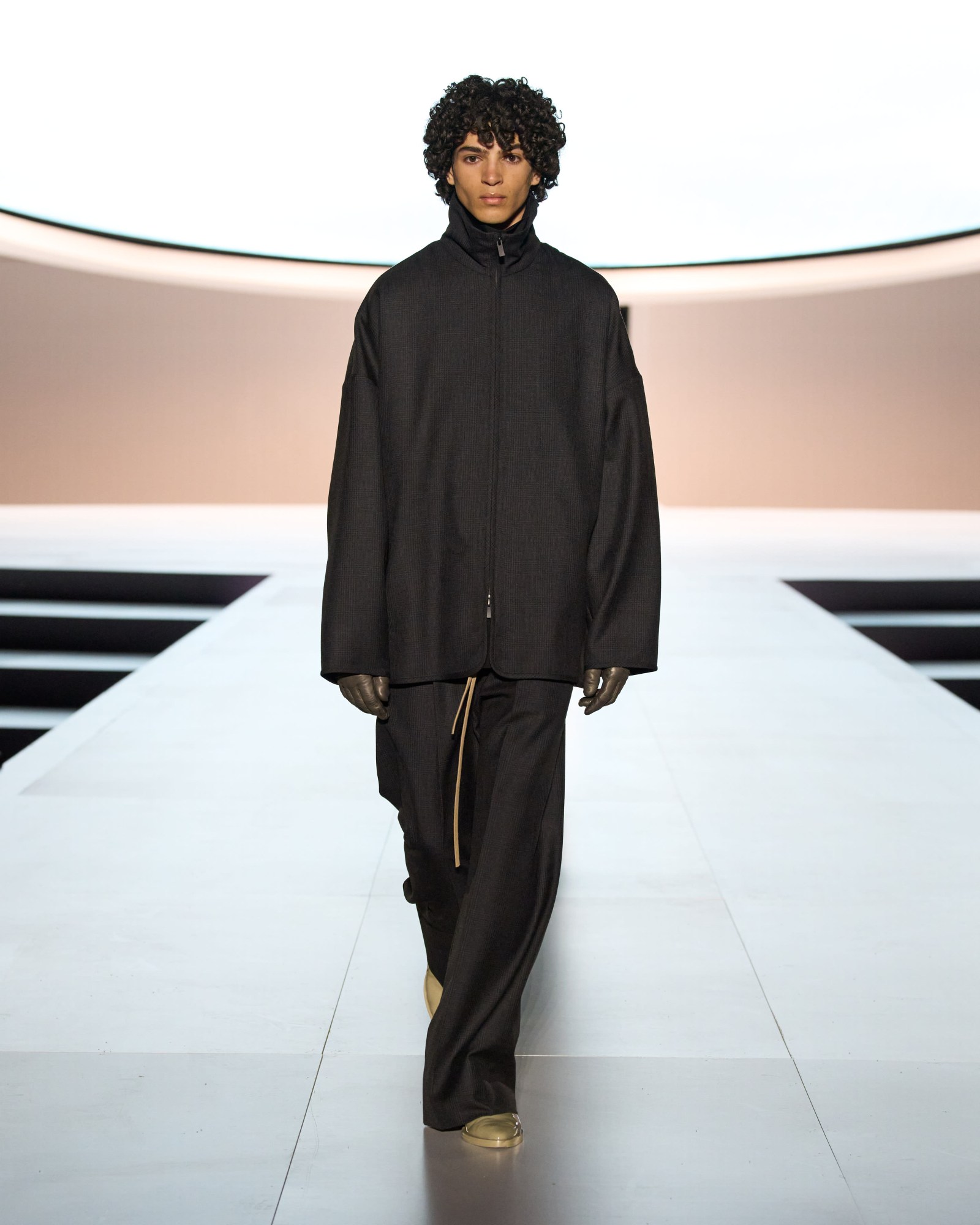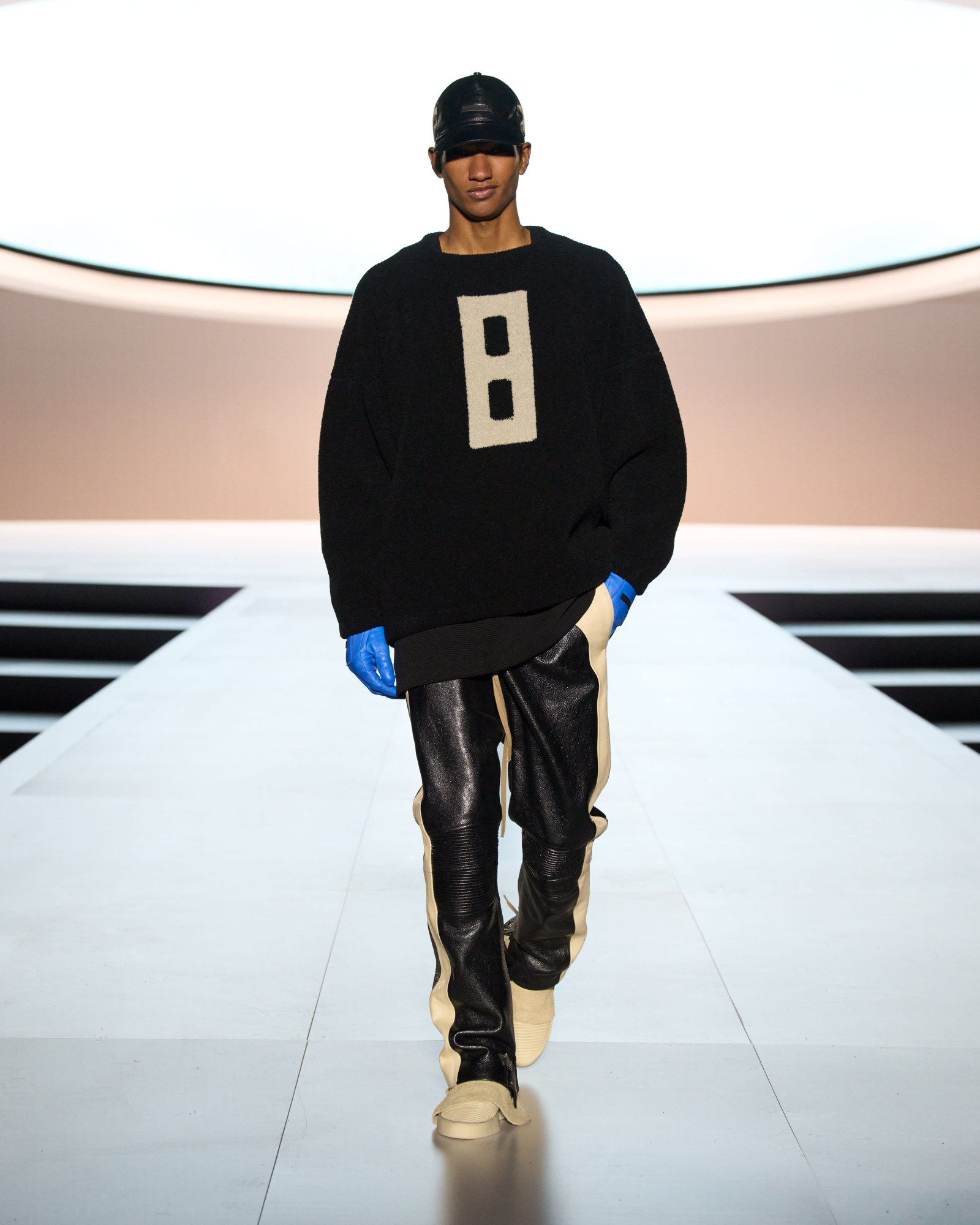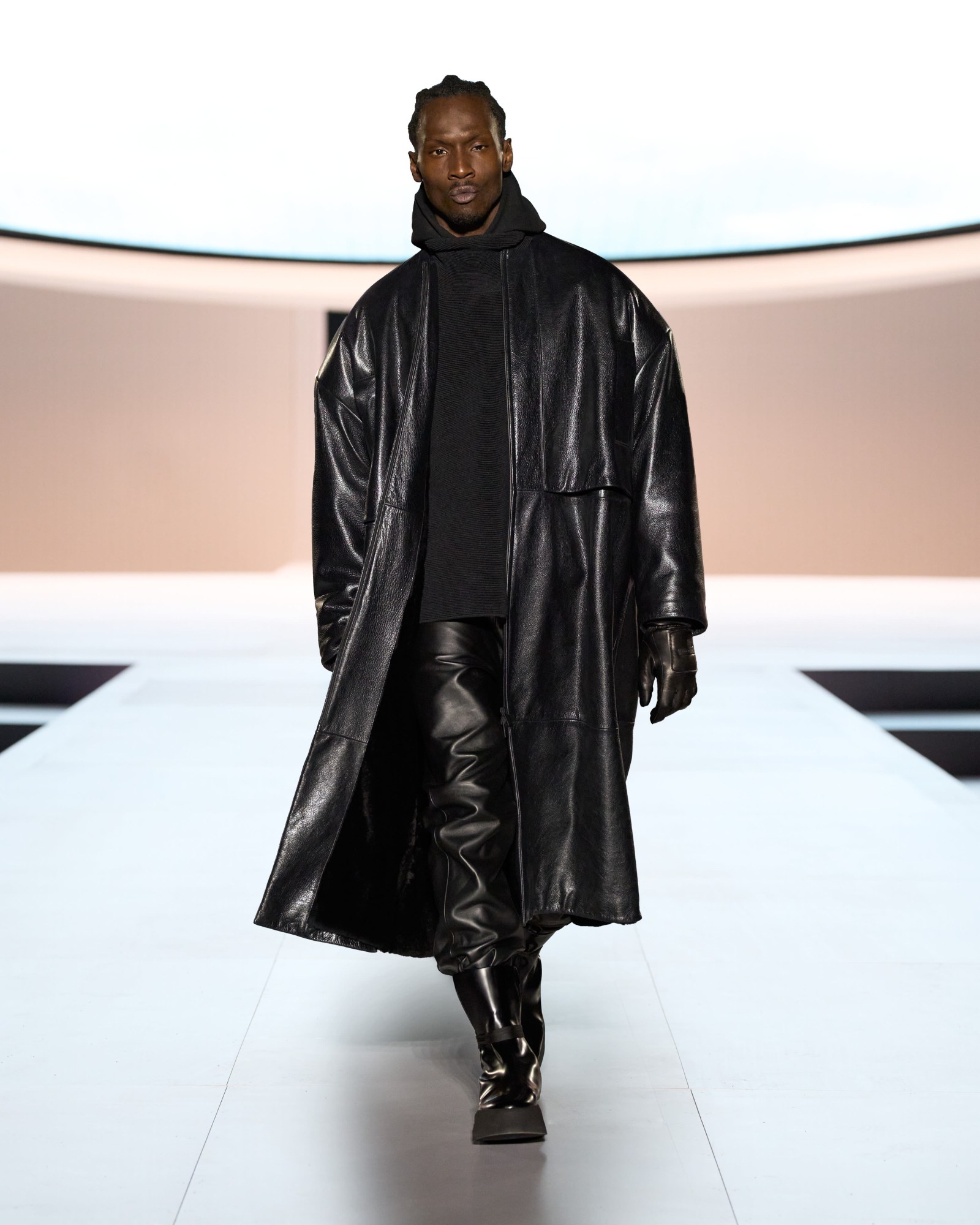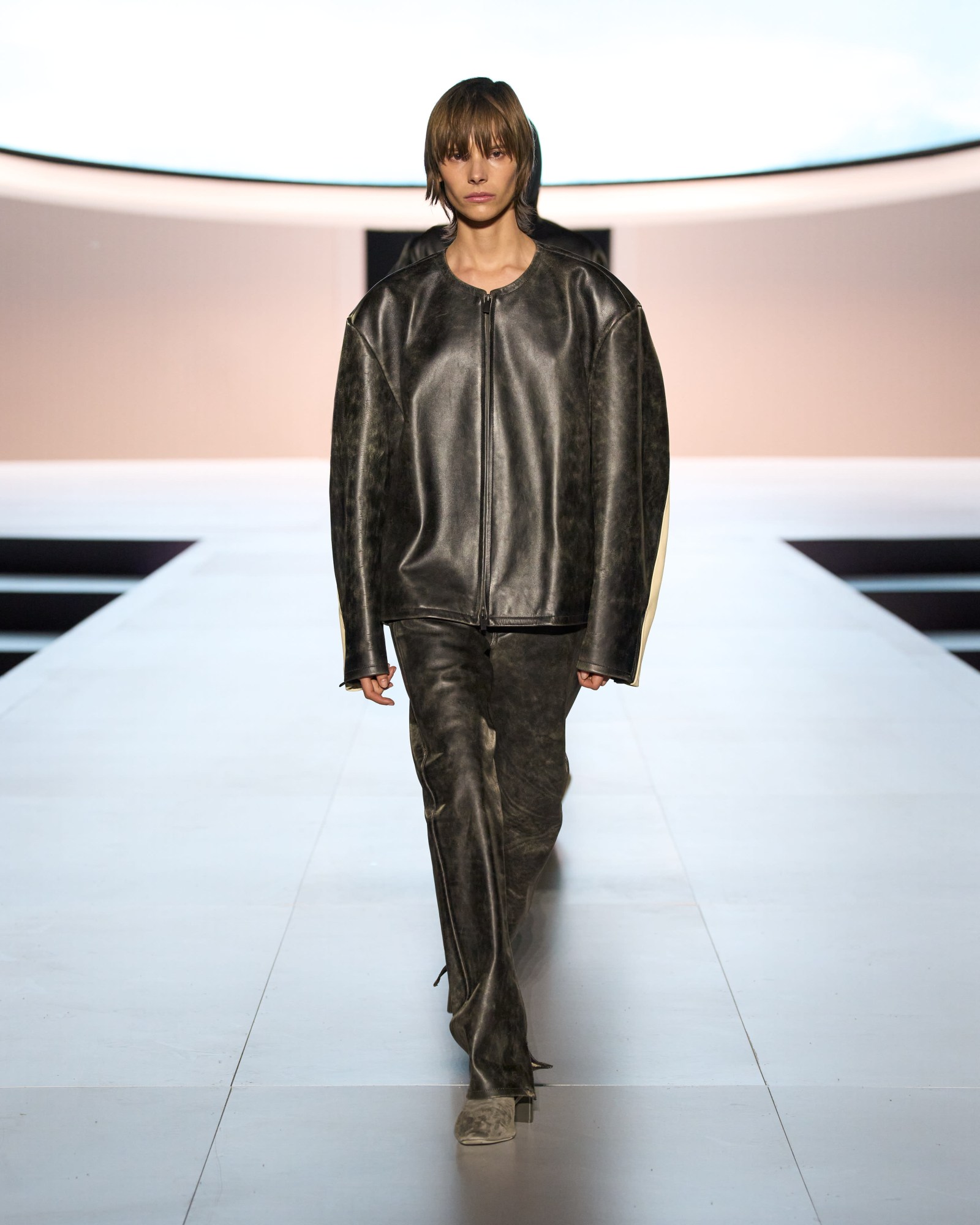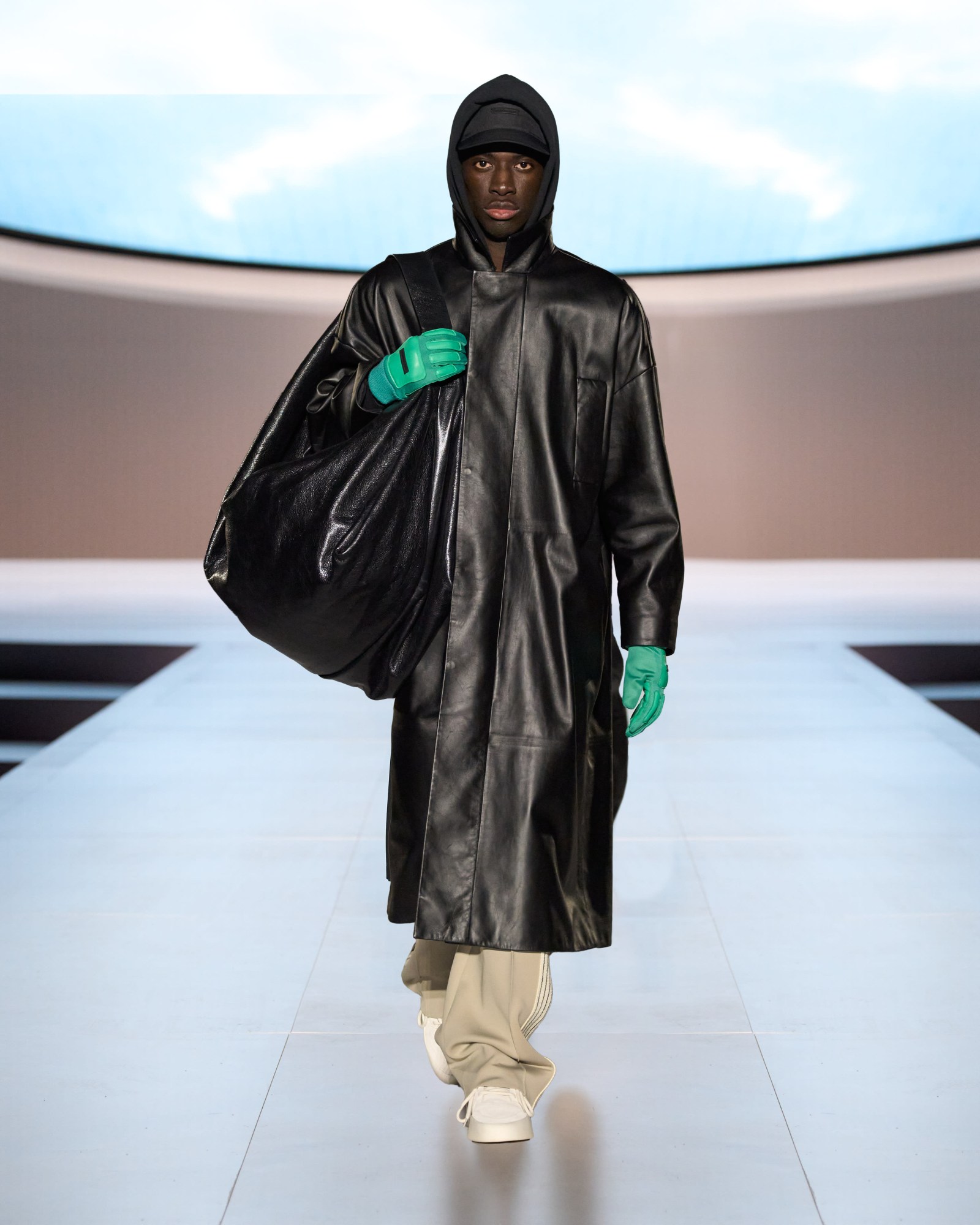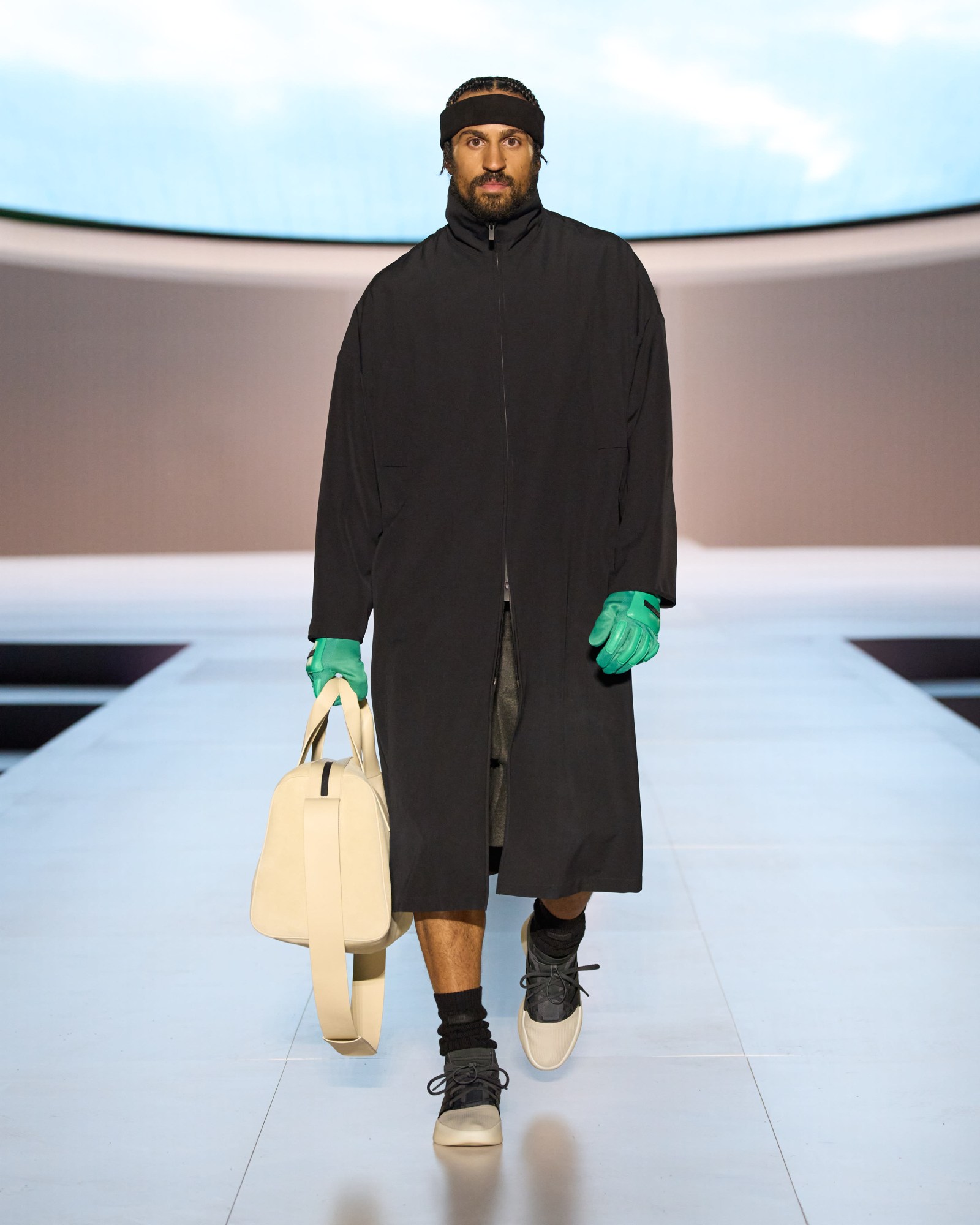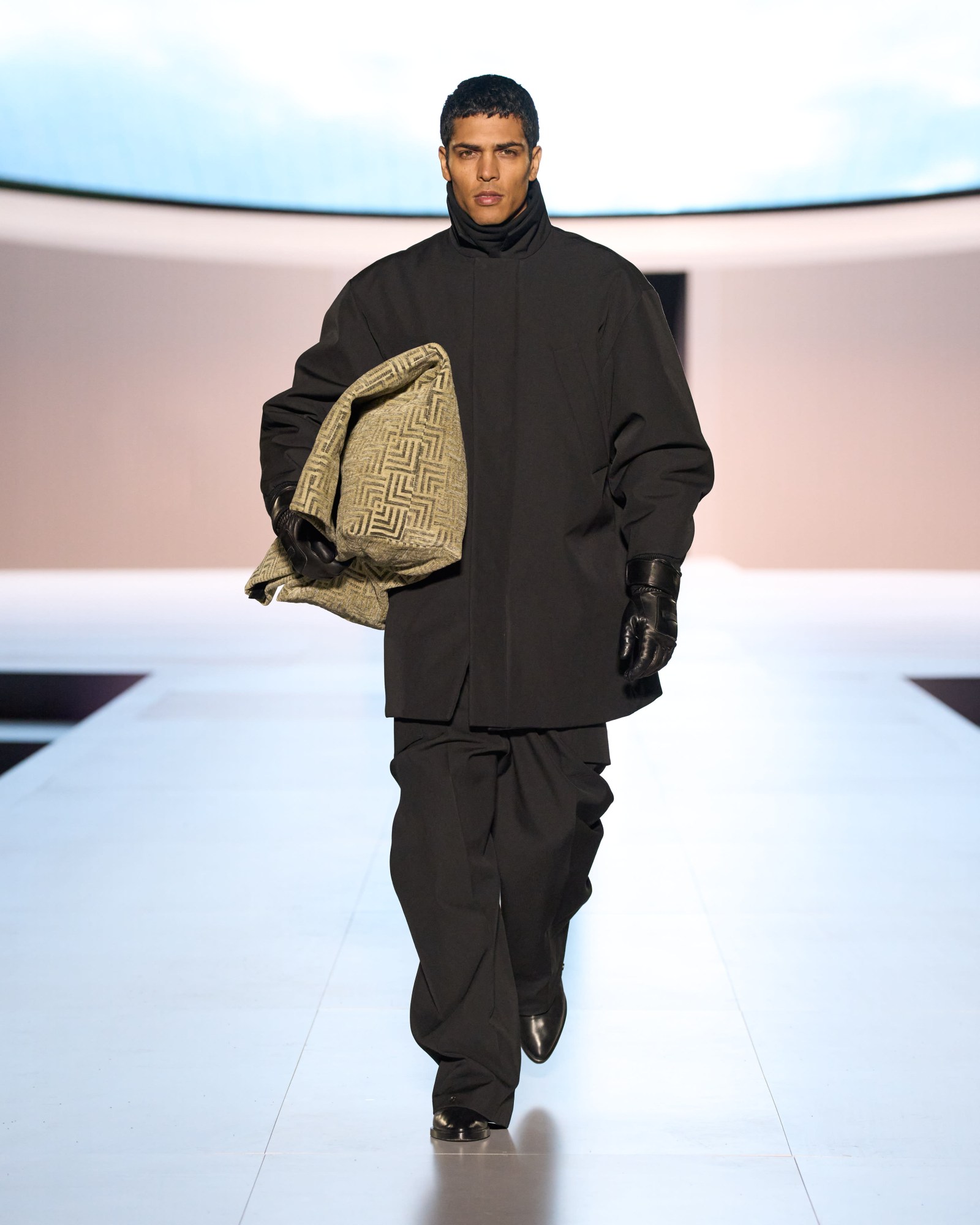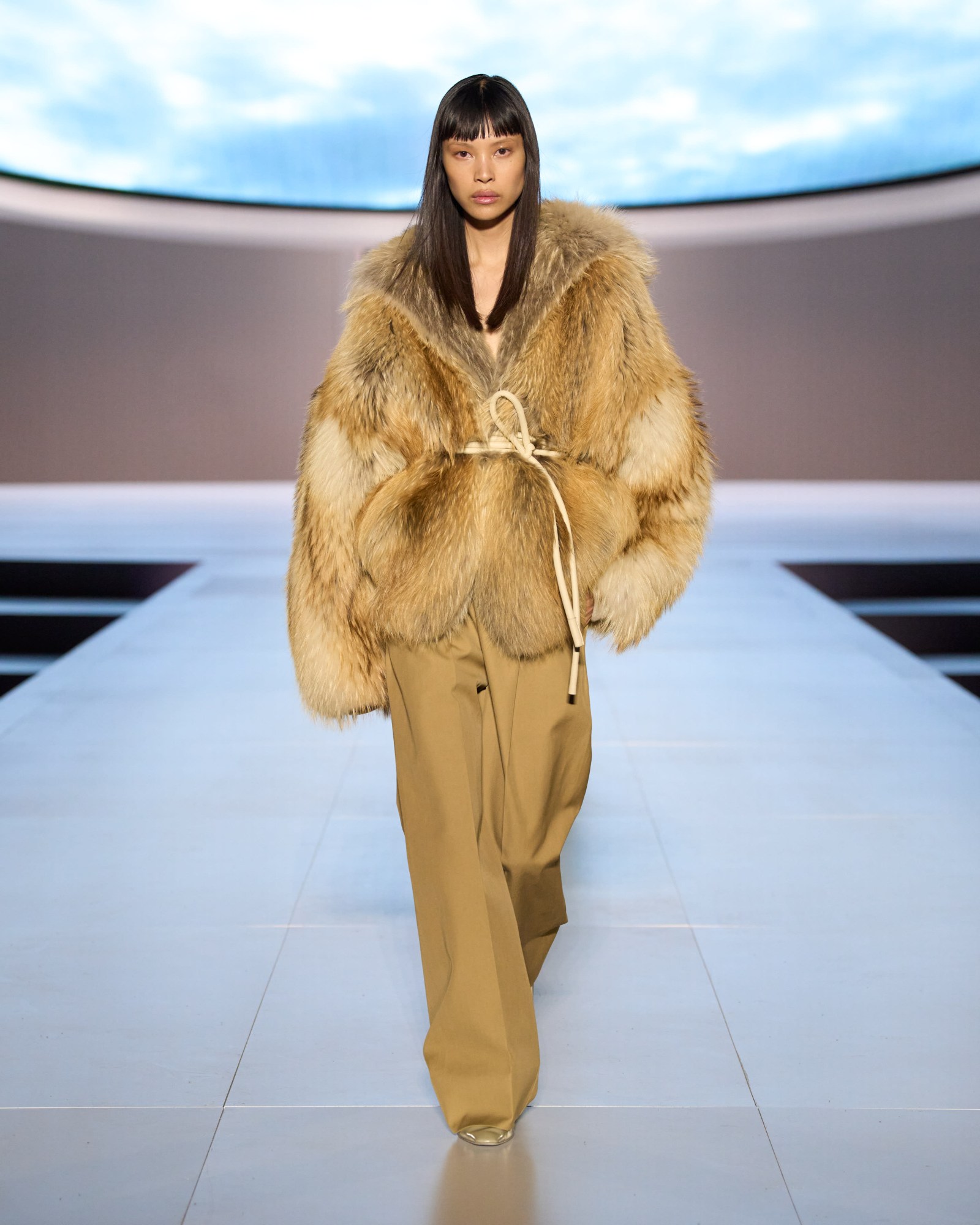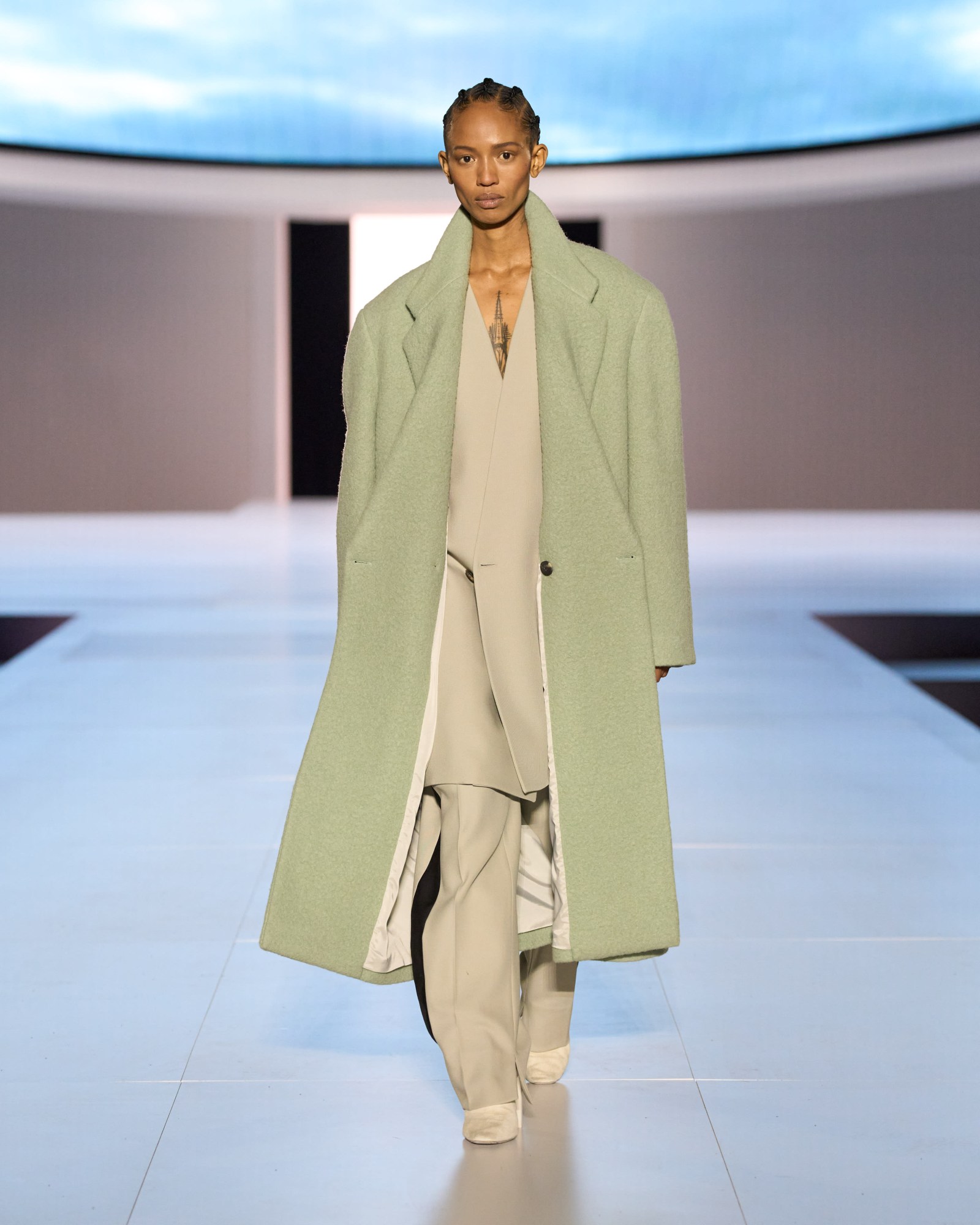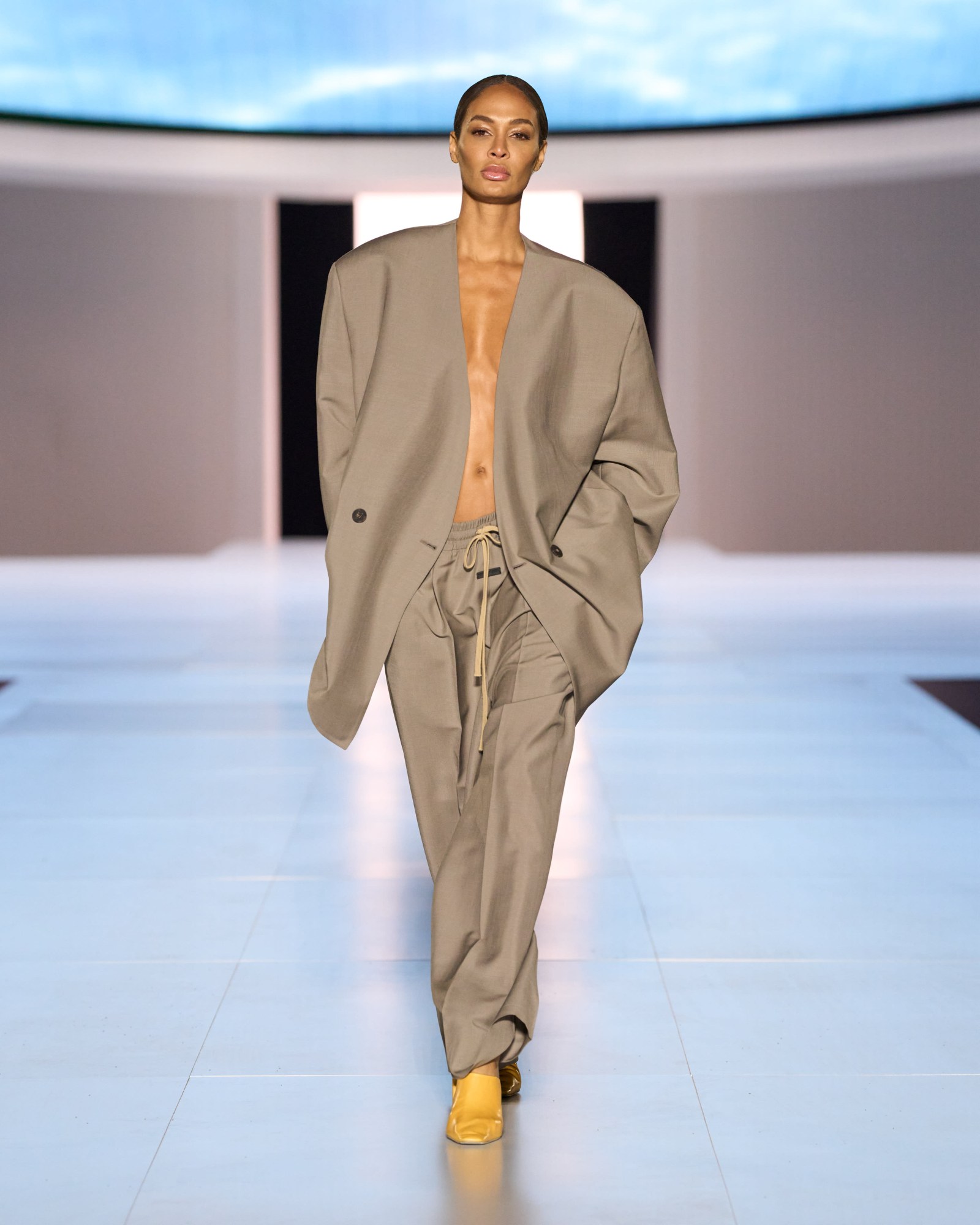It is nothing new to fashion to stage a gargantuan spectacle in lieu of a runway; between the ceaseless calendar of cruise activities and the increasingly competitive showmanship of seasonal presentations, fashion-as-entertainment has (surely) reached its peak. But last week, at the Hollywood Bowl, Fear Of God’s live-action debut appeared one of the most impressive we’ve seen in a long while: a genuine reflection both of the brand’s narrative and its cultural impact, couched in the splendour that a ten-year anniversary can afford to a thousands-strong audience that included everyone from Tyler, the Creator and The Clermont Twins to a roll call of the international press.
“I’ve never believed in speaking at every opportunity you get, and I finally felt like I had something to say,” reflected Jerry Lorenzo backstage at his brand’s first runway outing, a decade after it was founded. “My resources and my craft have caught up to my storytelling ability.” This was, he explained, his opportunity to share what American luxury looked like to him within the context of its broader cost.
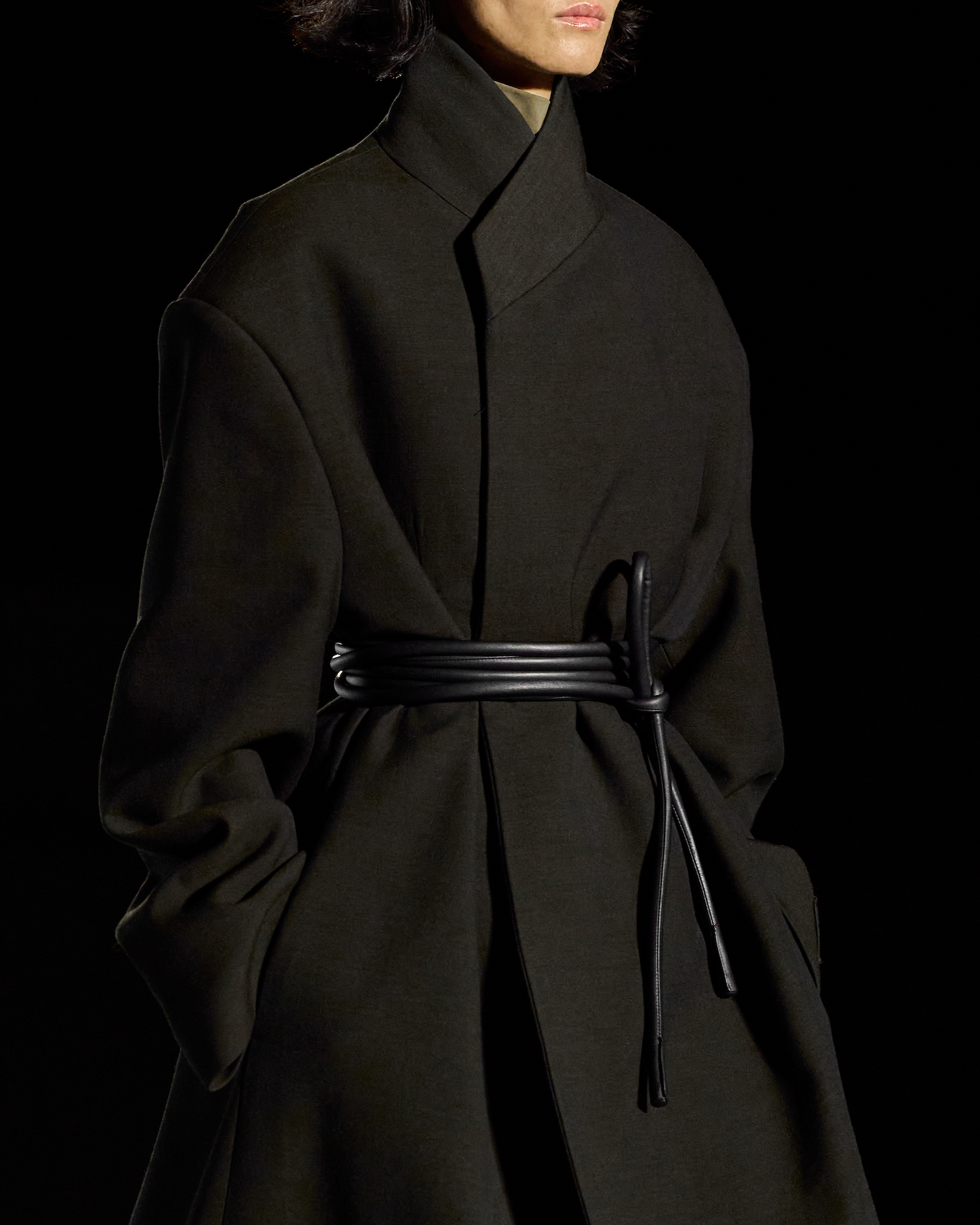
The duality of that narrative was introduced by Sampha, who performed a near half-hour set on his piano under a single spotlight, before the soundtrack broke into rousing monologues with the timbre of the Black church set against a tambourine rhythm. The doors to the runway opened, blinding light spilled out as if from a heavenly gateway, and the cast walked out to the searing vocals of Billie Holiday’s Strange Fruit.
“The music was a life’s work in understanding the bitter earth we live on, the strange fruit that comes from that earth, and the complexity of the nuances of all the different people trying to live and love together,” Jerry said. “With the music, I needed to share every part of the Christian journey, the Black journey — and not the parts that people like to take and celebrate. It’s a beautiful journey, but it’s even more beautiful if you pay attention to every part of it and understand why it is what it is.”
So this was the story of American luxury, completely told. “I grew up with my dad telling me stories of his grandpa picking cotton on his back,” Jerry explained. “And now I have the luxury of my staff bringing me fabric books, and I get to pick and choose the cotton that we use,” he said. “[Through that,] there’s a freedom and there’s a responsibility.”
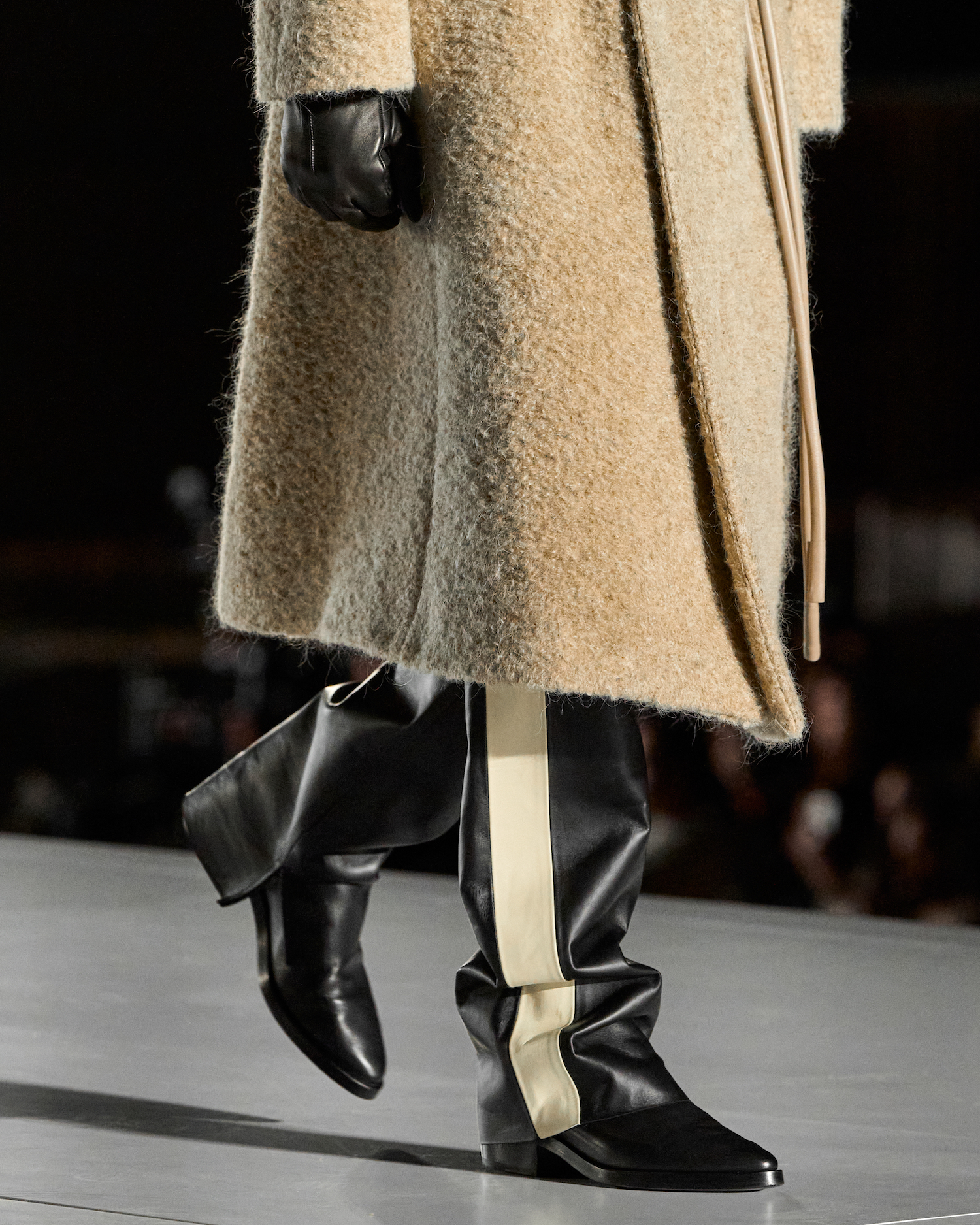
Fear Of God has built its brand on elegant, understated refinement – and within the context of a show, that sentiment remained thankfully true (“There was no intention of making a piece for this moment; I have no intention of making a ‘showpiece,’” he said). There was a wealth of perfectly proportioned, gently-oversized tailoring; meticulously slouched tracksuits; the introduction of an elegantly minimalist, Carolyn Besette-Kennedy-style women’s heel. Teasers of the brand’s long-awaited Fear of God Athletics collaboration with Adidas were peppered throughout, showcasing the full-wardrobe reality of the brand: “you’ve got a $3000 blazer and some Essentials sweats and Adidas sneakers,” smiled Jerry.
But while the clothing (gladly) remained within the parameters he has established over a decade, the staging reflected a depth to the brand which has sometimes been overlooked. “Everything that we do goes through a specific lens,” continued the designer. “And that lens is the same lens that I have had since I was five years old and getting dressed: how am I presenting myself to relieve someone of their preconceived notions of who I am, how am I effortlessly sophisticated?” The power of that seemingly effortless sophistication, positioned against the complex, oft-devastating backdrop of American history, made for profound impact.
That’s not to say that the show was without plenty of panache — Alton Mason closing in a fur coat, Pusha T spitting a Fear Of God rap, the introduction of the brand’s aforementioned, hotly-anticipated Adidas collaboration — but that there was an overarching, confident serenity to it all. By the close, when Ray Charles broke into “America The Great”, and fireworks exploded in the sky, that confidence appeared well deserved. We sat down with Jerry a few days after the show to hear the story in his words — and why he decided to tell it on one of the world’s most legendary stages.
You’re celebrating ten years of Fear Of God — so I wanted to go right back to the beginning. What was it that made you want to launch the brand?
I think, selfishly, I couldn’t find what I wanted in the marketplace and so I started making things that I wanted to wear. My day-to-day was as a party promoter in LA, out five nights a week, and most of the people who were popping bottles back then were brand owners, streetwear owners, and I narcissistically thought: if I can dress better than you, then I should be able to make a living doing it as well. I had no idea how hard it was going to be, but I went downtown and learned how to make a pattern, how to make a T-shirt. I needed a deeper foundation for why I was doing what I was doing, and I was just doing a devotion with my parents where we were talking about clouds and darkness around the kingdom of God — the layers to God, not in terms of a demonic darkness, but how having a fear of God is really being in a relationship and having peace with him. I liked that juxtaposition, and I felt like I could storytell around that for a long time. The goal was never to do something for a little bit. The goal has always been: what can I start that I know I can give all of myself to for a long, extended period.
Was there anyone you looked up to when you were starting out – either in fashion, or as a business owner?
The only person in fashion I really ever looked up to was Ralph Lauren. I really loved the way that what Ralph was doing was just an extension of who he was, and was communicating his version of what American luxury was. Today, 50 years after he started, I feel like American luxury is not a siloed perspective told by one group of people; it’s a mixture of ethnicities and cultures, and there is a beautiful thread that ties them all together. And there is an aesthetic attached to that, that is different than maybe what it was. So when we say we’re defining American luxury, we’re creating in my mind what I feel that American dream looks like today — which has a little bit more flavour.
And how do you manifest that sensibility in a garment? For me, it appears as a relaxed refinement, a slouch, an ease… a sense of cool.
I think it’s exactly that: it’s comfortable, but that doesn’t mean it’s not elegant. That doesn’t mean it’s not sophisticated. There’s a thin line between a voluminous shoulder and an oversized shoulder; between comfortable sweats and baggy sweats. I think we’ve been able to identify that balance, and we’re attempting to communicate a level of freedom in how you feel when you are dressed. I think we all want to feel comfortable — but sometimes when we’re most comfortable, we look like bums. So, how are you comfortable in the proportions of a suit and an overcoat? Tightness and stiffness has never been cool to me.

There’s a quietness to what you do; there’s very little volume or branding in Fear Of God. I assume that’s a very conscious decision?
Yeah, extremely. I’m not trying to draw attention to myself, to someone who’s wearing the brand. I’m trying to let their personality draw the attention, and the clothes just accentuate who they are. I want to create pieces that can sit in your closet for a long time and don’t have a specific time stamp on them because of their loudness. The hardest part about this collection was stripping back all the details that we had added to it — and I was happy with where we landed.
So when you start a new collection, are you starting with a moodboard, a narrative — or are you just working to perfect your core aesthetic?
It’s this Dieter Rams approach: this constant of saying the same thing, but saying it better. I keep using this analogy, if you give a fifth grader an assignment to write a paper about a person, and you give a senior an assignment to write a paper about a person, it’s the same story — but the senior has a larger vocabulary and a more sophisticated writing style. I feel like we’re telling the same story, but our vocabulary and our writing style is getting more and more sophisticated.
Why did you want to show this collection now, at the Hollywood Bowl, outside of the fashion calendar?
There’s so many things that lined up. I really felt as if I had something to say, and I really felt my craft had got to a place where I could share it live in motion. I really felt that I had a story to tell, and that story needed to be told in Los Angeles and could only be told at the Hollywood Bowl. There’s no other venue that I believe is as beautiful or iconic — it’s one of the last places in our city where there’s still a sense of history. And here, there’s this perfectly shaped, human-made shell in front of this beautiful mountainside that God made.
In terms of timing, I just never saw myself saying something in the middle of everyone else screaming. I felt like it needed space to be heard, and the entire experience was very contemplative. As soon as you sit down, it’s just Sampha and his piano. And then it goes into prayer. You’re in this contemplative state, and then you start to feel the angst of it. Hopefully, you walk out of there not so much thinking about what you saw, but maybe some internal questions. That was the intention.
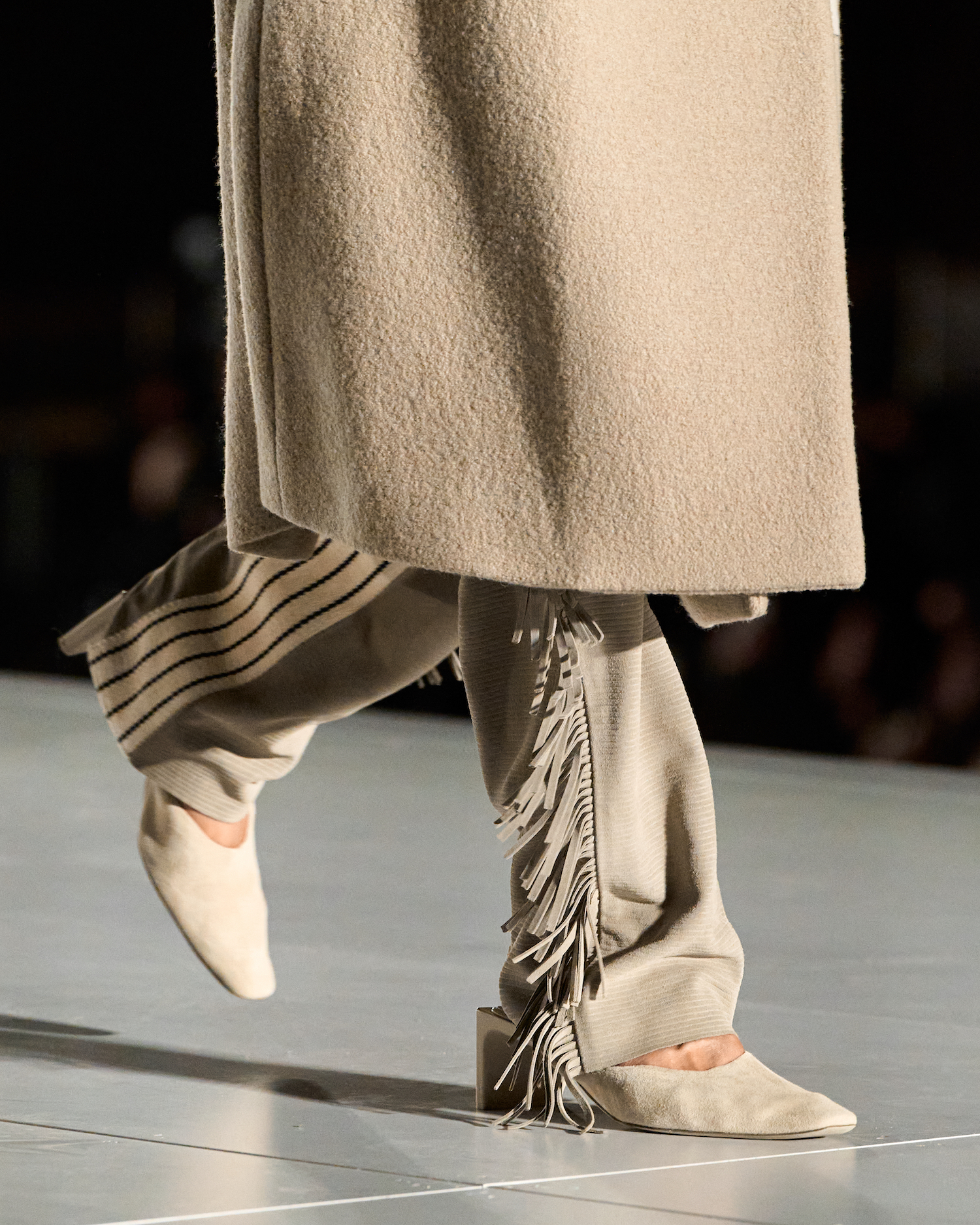
And can you tell me a little bit about the Adidas collaboration? How did that come about; how does that evolve things for you?
Where it’s at now is a lot different than where it started. It started off as a bigger relationship, with me kind of leading their basketball division — but we quickly realised that the way that I run a business is just fundamentally different than the way that they run a business, and there’s no way that I can lead the category in the way that I would need to lead it. On top of that, we were working on the joint collaboration that was already taking up so much of our team’s bandwidth — and let’s just be honest, we didn’t have time. So we teased a few pieces from that collection — and it’s complete, some of the shoes are just a few samples away. But we’ll probably reveal that in its entirety in the next month or so.
It was interesting seeing those elements come through, because they made the show more multifaceted: it looked like how people would actually wear the clothes, gave them a new dimension…
Yeah, that’s the goal. Like, you’ve got a $3000 blazer and some Essentials sweats and Adidas sneakers. I’m interested in having the freedom to design into those different dimensions authentically, and I’m glad I was able to show that with a few parts sprinkled in.



